REVENGE MODE ACTIVATED! Nihal Sarin Slams Magnus Carlsen and Naka in Bullet Brawl After World Cup Stunner
Nov 19th, 2025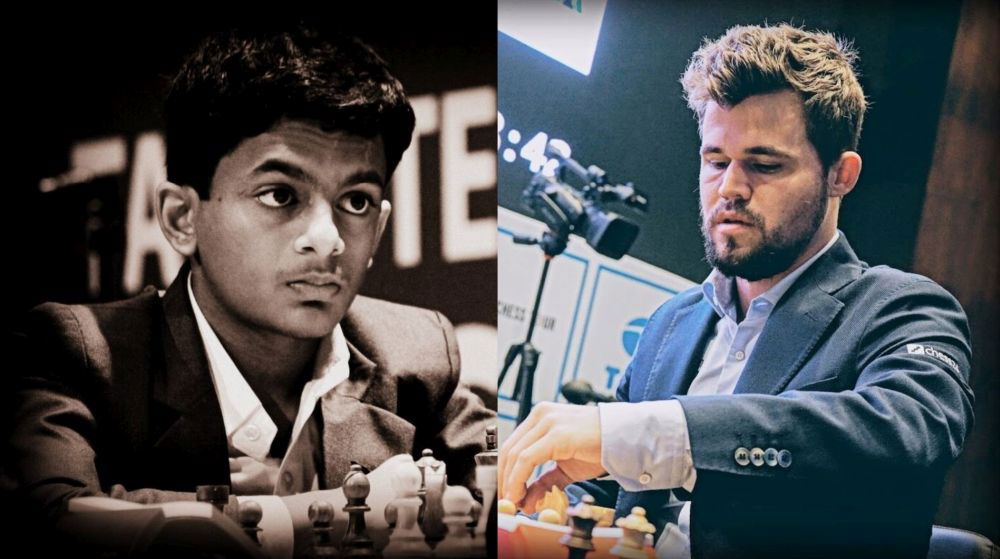
In the world of chess, comebacks are often louder than victories—and Nihal Sarin has just proven that again.
Barely days after his shocking early exit from the FIDE World Cup 2025 in Goa, the 21-year-old Indian speed-chess sensation delivered a statement performance that rocked the global chess community.
On Saturday, Nihal stormed into the Bullet Brawl Arena on Chess.com, a lightning-fast 1+0 battleground where instincts rule and hesitation is fatal. What followed next was nothing short of spectacular—he defeated Magnus Carlsen, Hikaru Nakamura and Praggnanandhaa in the same event, claiming his third Bullet Brawl title.
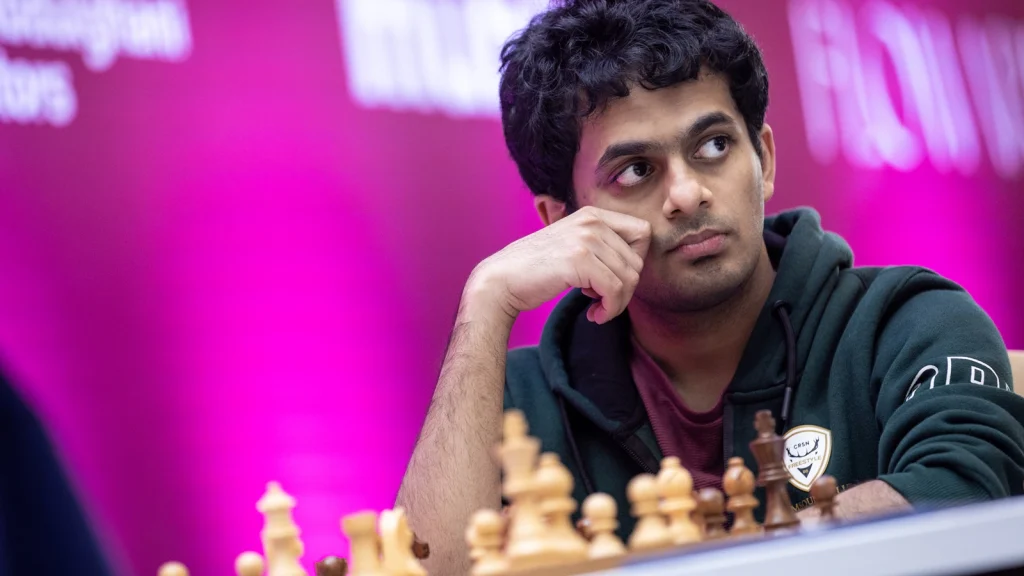
Yes. All three. In one night.
A redemption arc so perfect the chess world couldn’t stop talking about it.
A Night of Pure Speed Chess Chaos
Bullet Brawl is a brutal two-hour marathon where players fight for points every minute, turning the arena into a warzone of tactics, time scrambles and neural-level calculation.
Yet, Nihal seemed to move in a different universe altogether.
1.65 games played
2.45 wins
3.10 draws
4.10 losses
5.Total: 151 points
He finished ahead of Hikaru Nakamura and Andrew Tang, both legends of bullet chess. For context, Nakamura owns 48 all-time Bullet Brawl wins. And yet, on this night… Nihal led the pack.
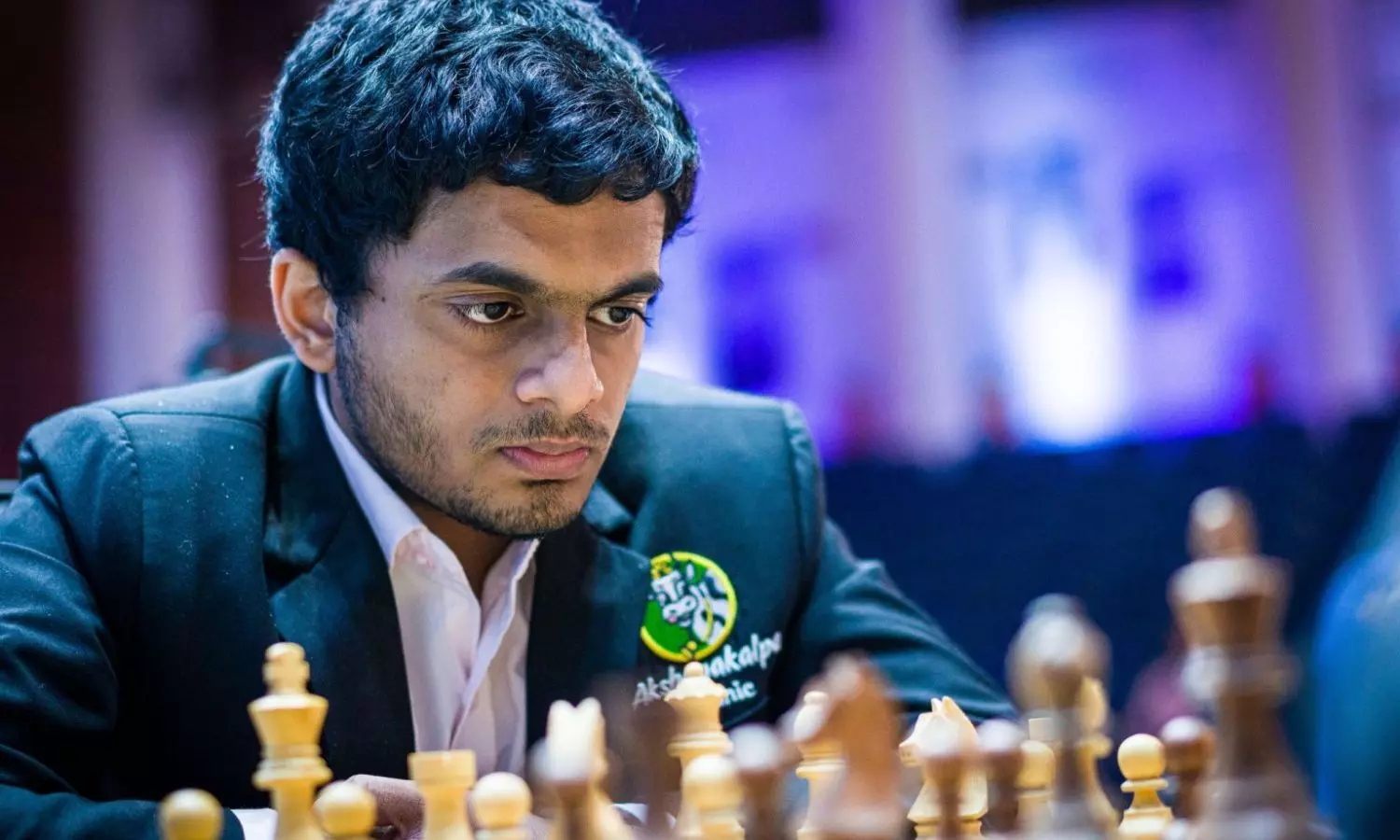
Often described as a “speed chess demon,” Nihal reminded the chess world why online formats fear his name.
What Makes This Victory Special?
Because this win came right after a disappointing World Cup performance—his second-round loss to Greek GM Stamatis Kourkoulos-Arditis had left fans shocked.
But champions don’t pause. They rise.

Nihal didn’t retreat.
He recalibrated.
And then he unleashed a performance that felt like both revenge and rebirth.
His dominance across formats—especially blitz and bullet—continues to inspire young players who see online arenas as the new proving grounds of chess mastery.
The Vishnu Prasanna Connection: A Legacy of Excellence
Behind every great player, there are great mentors—and one of the key figures in Nihal Sarin’s formative chess journey is GM Vishnu Prasanna, the renowned coach who helped shape Nihal’s early growth into an elite player.
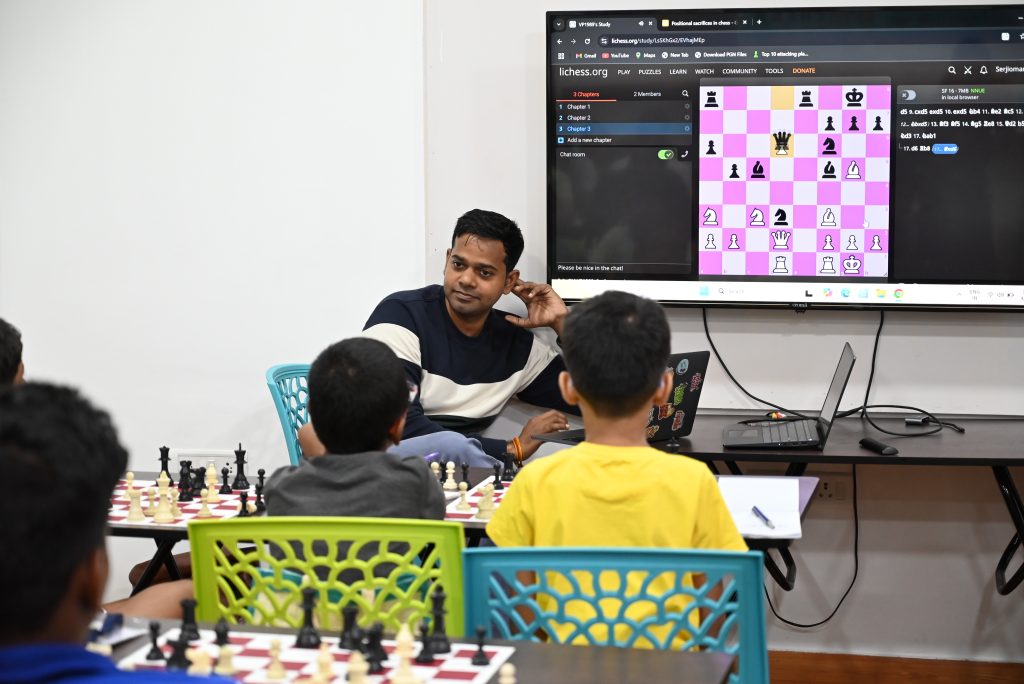
Today, Vishnu Prasanna stands as the Co-Founder of the Madras School of Chess, one of India’s fastest-growing chess academies known for its deep training culture, strong coaching team, and grandmaster-level guidance.
His role in Nihal’s evolution is well-acknowledged in the Indian chess community
1.Building Nihal’s early positional strength
2.Instilling disciplined calculation methods
3.Sharpening his tactical alertness
4.Strengthening emotional balance during competitive pressure
Nihal’s achievements—including this latest Bullet Brawl triumph—continue to reflect the roots established through years of high-quality coaching.
For parents and students across India, this connection signals a clear message:
The Madras School of Chess isn’t just another academy. It is built by the same minds that trained India’s brightest stars.
Why This Win Matters for Indian Chess
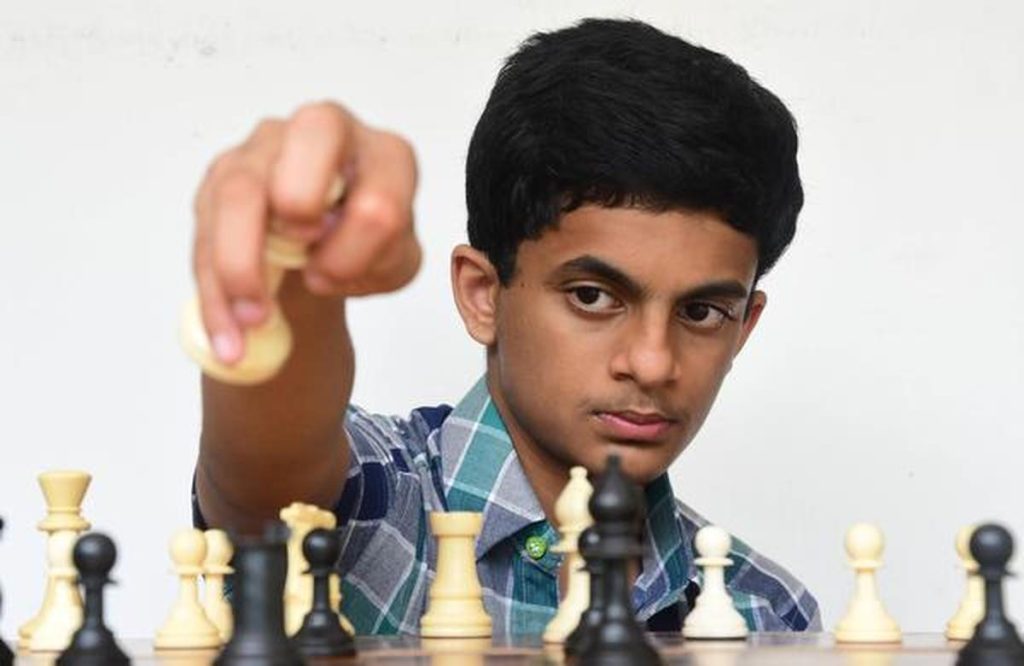
India is witnessing a chess boom—Gukesh’s World Championship title, rising young prodigies, stronger domestic tournaments, and global headlines.
Nihal’s latest win adds another spark to this movement.
His performance shows:
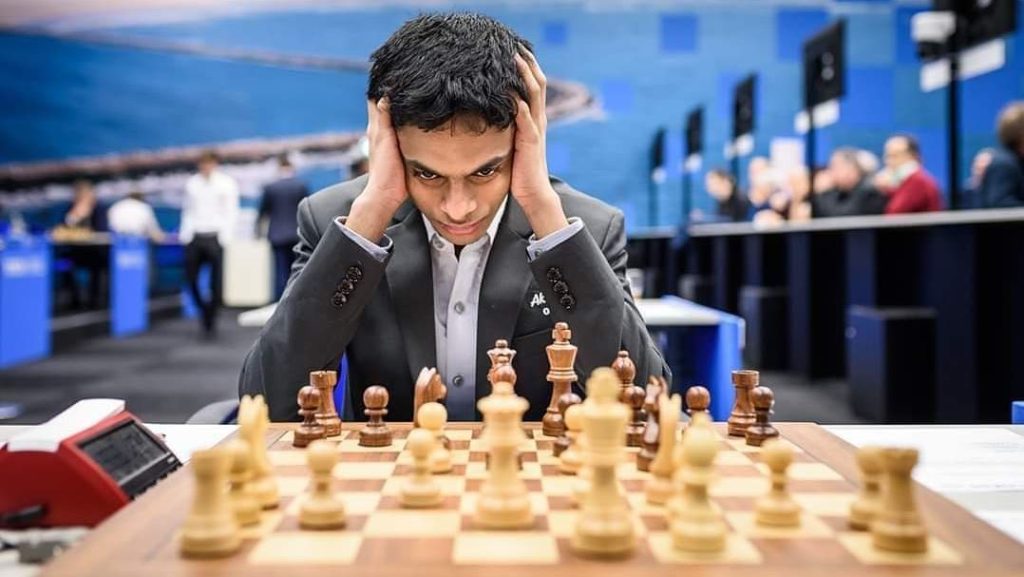
India’s young chess generation is now strong enough to challenge legends like Magnus Carlsen and Hikaru Nakamura. They are especially dominating online chess formats, proving that India is becoming a powerful force in fast-paced games. These players also show incredible mental strength, bouncing back from losses and staying focused under pressure. Altogether, India is producing world-class talent across blitz, rapid, bullet, and classical chess — making the country one of the most complete and promising chess nations in the world.
This victory isn’t just individual glory.
It’s a message to the chess world:
India’s next wave is here, and stronger than ever.
A New Chapter Begins
Nihal’s Bullet Brawl win is more than a tournament result.
It’s a reminder that setbacks are temporary, but champions are permanent.
As he continues to rise—and as academies like the Madras School of Chess push forward with elite-level training for the next generation—the future of Indian chess looks unstoppable.
The board is set.
The players are ready.
And India is writing a new era in global chess.
♟️ Ready to Level Up Your Game?
𝐉𝐨𝐢𝐧 𝐌𝐚𝐝𝐫𝐚𝐬 𝐒𝐜𝐡𝐨𝐨𝐥 𝐨𝐟 𝐂𝐡𝐞𝐬𝐬 𝐭𝐨 𝐝𝐞𝐟𝐞𝐚𝐭 𝐲𝐨𝐮𝐫 𝐨𝐩𝐩𝐨𝐧𝐞𝐧𝐭 𝐰𝐢𝐭𝐡 𝐛𝐫𝐢𝐥𝐥𝐢𝐚𝐧𝐜𝐞 𝐚𝐧𝐝 𝐩𝐫𝐞𝐜𝐢𝐬𝐢𝐨𝐧!
📍 Locations: T.Nagar | Anna Nagar | Mandaveli | Online
📞 Call: +91 98404 03376
🌐 Visit: www.madrasschoolofchess.com
📲 Follow us: @madrasschoolofchess
The Dreaming Board — Where Young Minds Turn into Grandmasters
Nov 07th, 2025
In a world where children chase fleeting trends, one timeless art continues to shape minds and inspire dreams — Chess.
For hundreds of young players in Chennai, that dream begins at Madras School of Chess (MSC) — the city’s leading academy founded by Grandmaster Vishnu Prasanna, the former coach of World Chess Champion D. Gukesh.
At MSC, the chessboard isn’t just 64 squares — it’s a canvas of creativity, courage, and critical thinking.
From T. Nagar to Anna Nagar, Mandaveli, and Online, our students learn to see the world the way masters do: one move ahead.
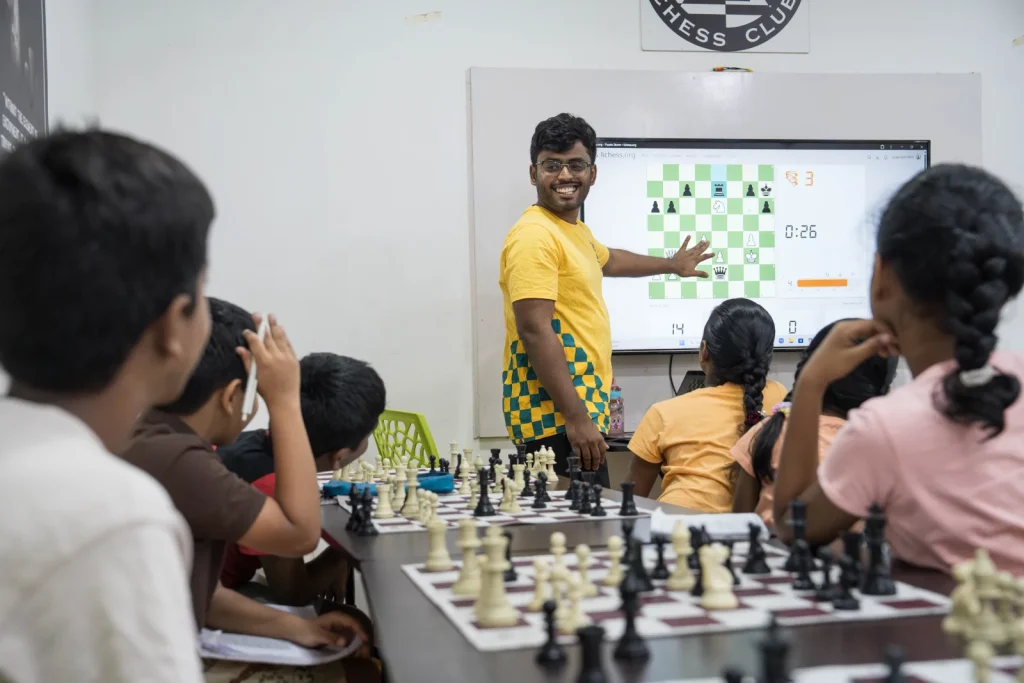
“When kids start to think before they move, they begin to see life differently,” says GM Vishnu Prasanna.
Our philosophy is simple: nurture the mind, not just the moves.
Every child is guided personally by certified trainers and FIDE-rated coaches who help them discover their unique playing style — turning curiosity into confidence and practice into progress.
Why Chess Feels Like a Dream to Kids
For children, chess feels magical.
A knight’s leap becomes a story, a queen’s defense becomes a promise.
At Madras School of Chess, that magic is transformed into mastery through a structured, playful learning environment:
- 🎯 Age-based batches for beginners, intermediate, and advanced levels
- 🧠 Personal mentorship with performance tracking and game analysis
- ♟️ Regular tournaments & internal leagues that build competitive focus
- 💡 Tactical puzzle labs and masterclass game breakdowns to deepen intuition
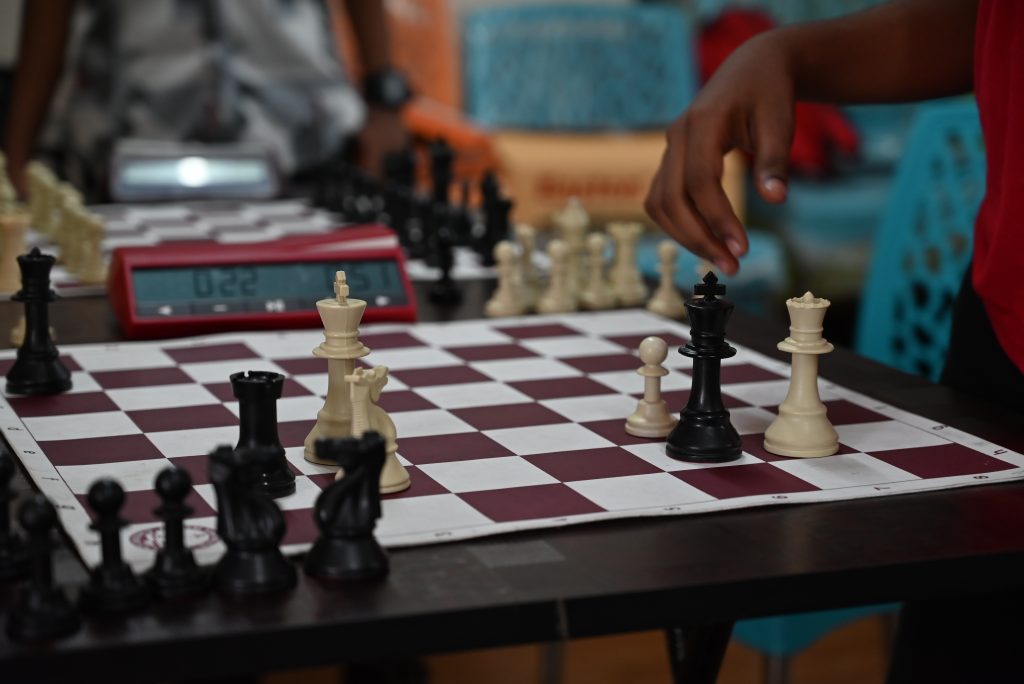
Every session is designed to spark imagination while sharpening discipline — that’s why parents across Chennai trust MSC as the place where focus meets fun.
🌟 The Emotion Behind the Game
Chess teaches more than strategy. It teaches patience, composure, and creative thinking.
Our students often surprise parents with their newfound calm, confidence, and ability to plan — not just on the board, but in academics and daily life too.
Champions in the Making: The MSC Success Story
At MSC, success isn’t measured only in trophies — it’s seen in the steady rise of our students’ performance across every batch and category.
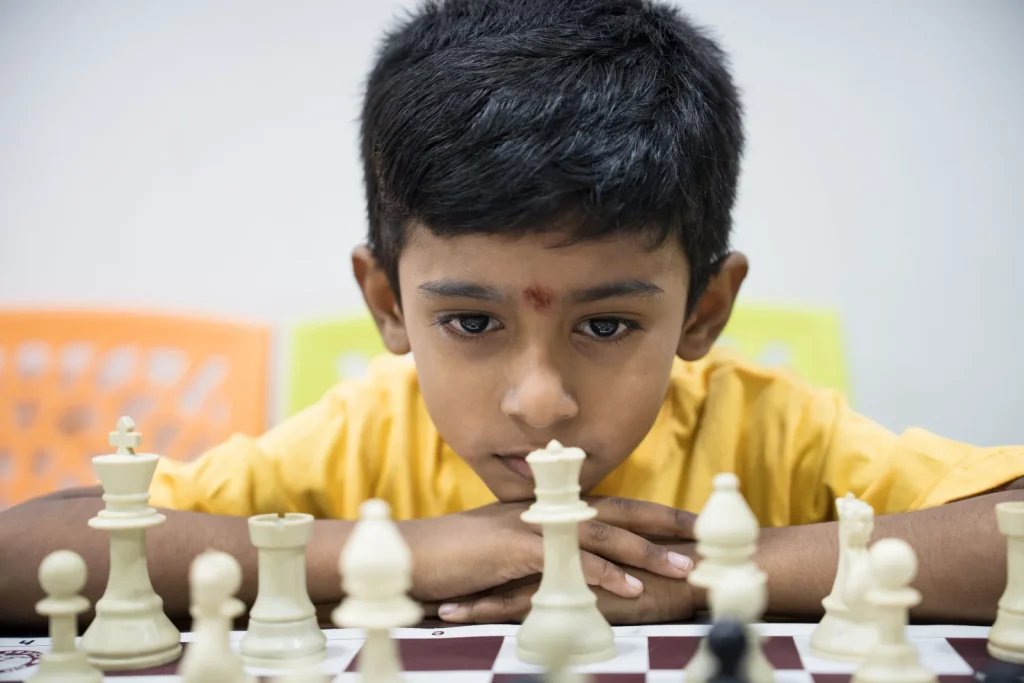
🏅 Growing Every Day, Move by Move
Each month, our academy’s achievement board grows longer.
From district-level wins to state-level podium finishes, MSC students have been consistently outperforming in tournaments across Tamil Nadu and beyond.
Our juniors dominate under-8 and under-10 categories, while advanced batch players now compete at national-ranking events with remarkable success rates.
Behind every medal is a story of mentorship, discipline, and passion — a reflection of the MSC ecosystem that blends analytical training with emotional encouragement.
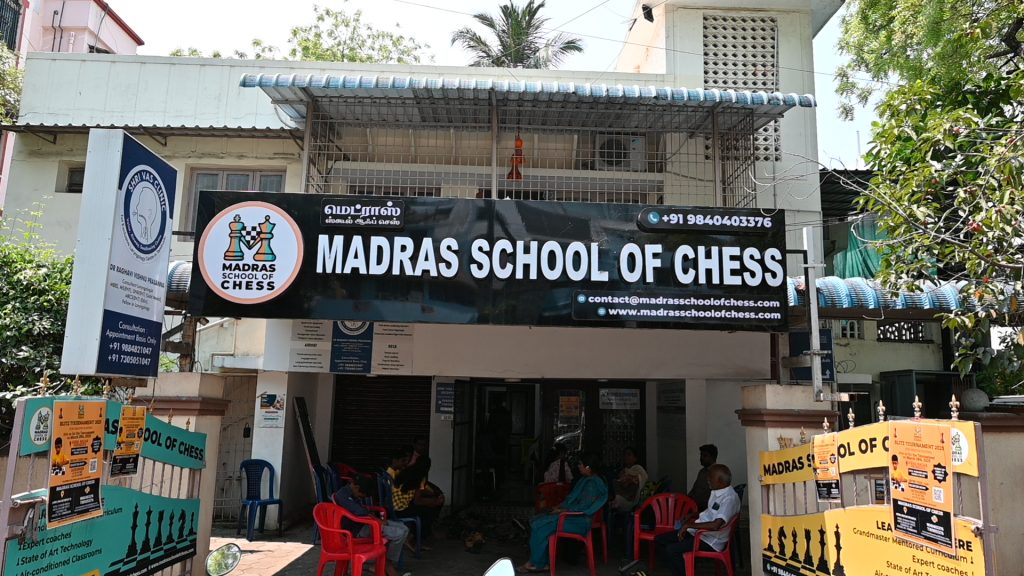
“We’ve built a culture where improvement matters more than instant victory — and that’s what keeps our winning curve rising,”
— GM Vishnu Prasanna, Founder.
✨ Inspired by Legends, Guided by Masters
Following the legacy of Chennai’s very own Viswanathan Anand, our founder and coaches instill the same spirit of perseverance and curiosity that defines India’s new-age grandmasters like Gukesh D.
Through our hybrid training model — offline and online — we now reach students across India and overseas, nurturing the next generation of global thinkers.
Your Child’s Chess Story Starts Here
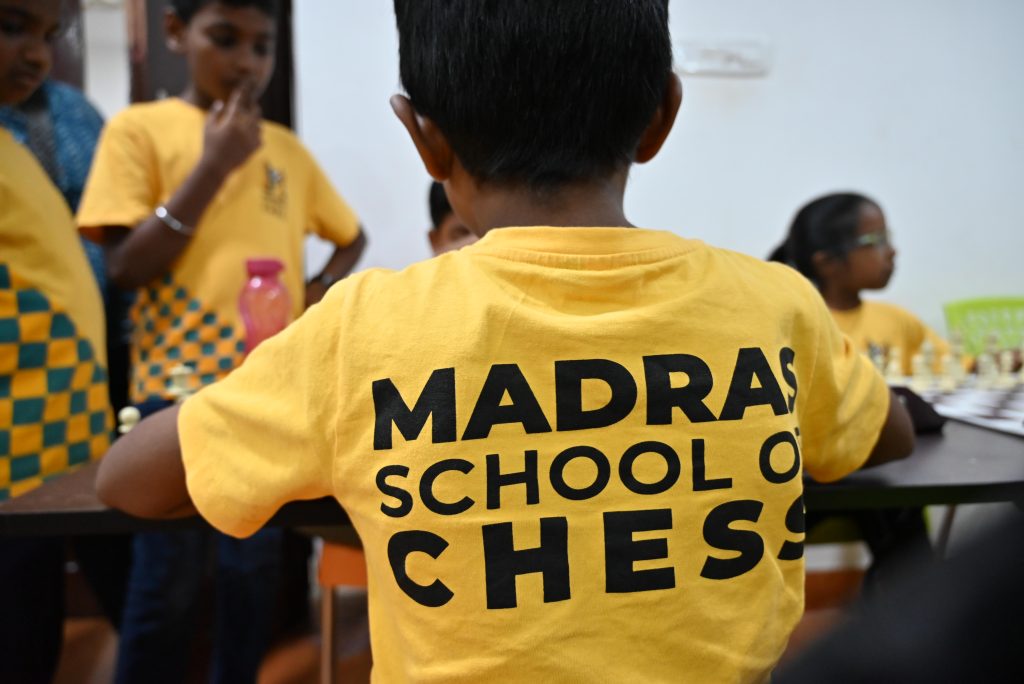
Join Chennai’s No. 1 Chess Academy — Madras School of Chess, where dreams become discipline and every move creates a story worth telling.
📍 Locations: T. Nagar | Anna Nagar | Mandaveli | Online
📞 Call: +91 98404 03376
🌐 Visit: www.madrasschoolofchess.com
Madras School of Chess — Where dreams play their first move.
𝐀 𝐍𝐞𝐰 𝐆𝐞𝐧𝐞𝐫𝐚𝐭𝐢𝐨𝐧 𝐓𝐚𝐤𝐞𝐬 𝐭𝐡𝐞 𝐁𝐨𝐚𝐫𝐝
Oct 24th, 2025
Chess is experiencing a seismic shift. While veterans still dominate top boards, a younger generation is breaking through with astonishing force. Consider the rising star Faustino Oro — only 11 years old — who recently scored an undefeated 7½/9 and earned his first GM norm, setting records for the strongest performance under-12 in history.

At the same time, major events such as the FIDE Grand Swiss 2025 in Samarkand showcased emerging talents like Matthias Blübaum and others who secured qualification spots for the highly-coveted Candidates Tournament.
𝐖𝐡𝐚𝐭’𝐬 𝐝𝐫𝐢𝐯𝐢𝐧𝐠 𝐭𝐡𝐢𝐬 𝐠𝐞𝐧𝐞𝐫𝐚𝐭𝐢𝐨𝐧𝐚𝐥 𝐬𝐮𝐫𝐠𝐞?
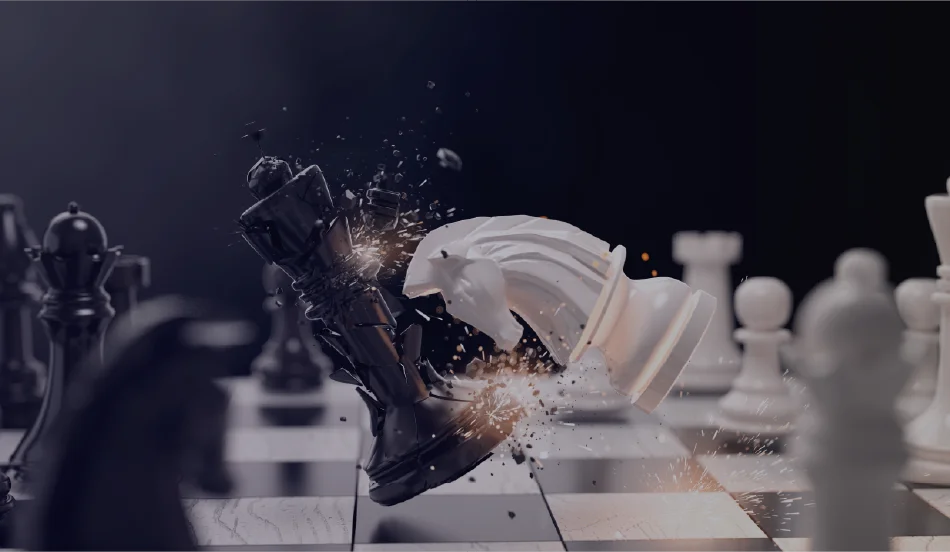
A mix of enhanced training tools (including top-tier online platforms), global exposure even at early ages, and formats that reward dynamic play and risk-taking.
For fans, this means fresh narratives and unexpected outcomes. For federations, it signals the importance of nurturing juniors and giving them pathways. For you, the reader, it means that the chess world you thought you knew is being rewritten right now.
𝐑𝐚𝐩𝐢𝐝 & 𝐁𝐮𝐥𝐥𝐞𝐭 𝐅𝐨𝐫𝐦𝐚𝐭𝐬: 𝐂𝐡𝐚𝐧𝐠𝐢𝐧𝐠 𝐇𝐨𝐰 𝐂𝐡𝐞𝐬𝐬 𝐈𝐬 𝐏𝐥𝐚𝐲𝐞𝐝

The second trend reshaping chess: speed. The classic slow-time control games still matter, but rapid, blitz and bullet formats are gaining outsized influence. The Bullet Chess Championship 2025 on saw Alireza Firouzja dominate with a blistering 19.5-5.5 final win — a display of tactical acuity, lightning reflexes and psychological dominance.
Meanwhile, the SuperUnited Croatia Rapid & Blitz 2025 event saw Magnus Carlsen clinch victory with a round to spare, even while admitting his “B-game” was active.
𝐖𝐡𝐚𝐭 𝐝𝐨𝐞𝐬 𝐭𝐡𝐢𝐬 𝐦𝐞𝐚𝐧 𝐟𝐨𝐫 𝐭𝐡𝐞 𝐠𝐚𝐦𝐞?
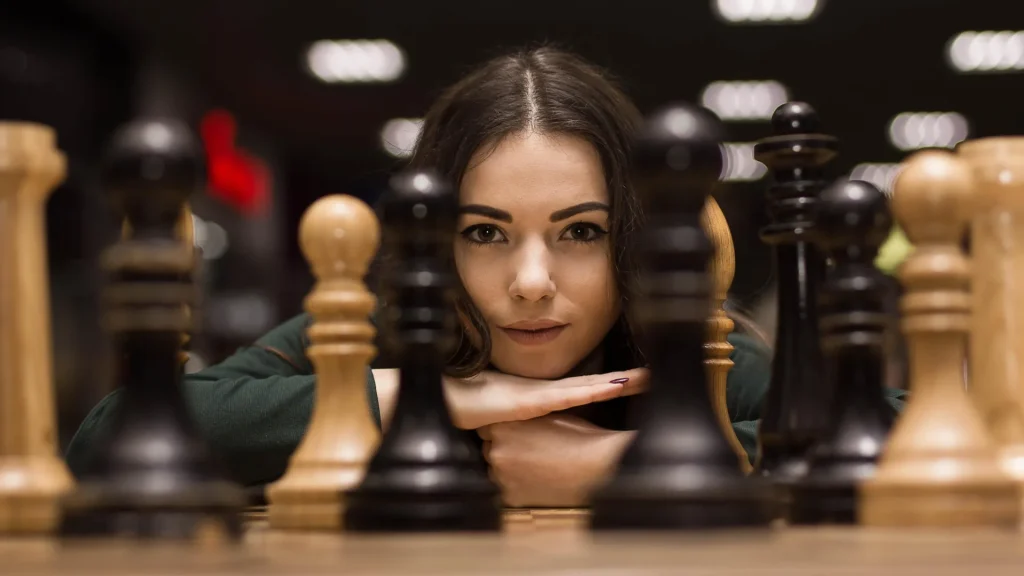
𝐒𝐡𝐨𝐫𝐭𝐞𝐫 𝐚𝐭𝐭𝐞𝐧𝐭𝐢𝐨𝐧 𝐬𝐩𝐚𝐧𝐬: With online streams and social media clips, players who can shine in fast time-controls are gaining fans and sponsors.
𝐃𝐢𝐟𝐟𝐞𝐫𝐞𝐧𝐭 𝐩𝐫𝐞𝐩𝐚𝐫𝐚𝐭𝐢𝐨𝐧: Depth of opening preparation is still vital, but so is adaptability, intuition and precision under extreme time pressure.
𝐇𝐲𝐛𝐫𝐢𝐝 𝐬𝐤𝐢𝐥𝐥𝐬𝐞𝐭: Elite players now train for both classical stamina and rapid reflexes. The line between “rapid specialist” and “classical champion” is blurring.
For anyone playing or following chess, this means: adapting to formats, studying faster tactics, and valuing the “bullet mindset” alongside the “𝐠𝐫𝐚𝐧𝐝𝐦𝐚𝐬𝐭𝐞𝐫 𝐝𝐞𝐞𝐩-𝐚𝐧𝐚𝐥𝐲𝐬𝐢𝐬 𝐦𝐢𝐧𝐝𝐬𝐞𝐭”. The modern champion is versatile.
𝐖𝐡𝐚𝐭 𝐈𝐭 𝐀𝐥𝐥 𝐌𝐞𝐚𝐧𝐬 & 𝐇𝐨𝐰 𝐘𝐨𝐮 𝐂𝐚𝐧 𝐏𝐥𝐮𝐠 𝐈𝐧?

𝐘𝐨𝐮𝐭𝐡 𝐚𝐜𝐜𝐞𝐥𝐞𝐫𝐚𝐭𝐢𝐨𝐧: If an 11-year-old can set records, federations, coaches and clubs must start talent spotting even earlier and offering strong support, both online and offline.
𝐅𝐨𝐫𝐦𝐚𝐭 𝐝𝐢𝐯𝐞𝐫𝐬𝐢𝐟𝐢𝐜𝐚𝐭𝐢𝐨𝐧: Events are no longer just classical tournaments; rapid, blitz, mixed formats (and even new variants) will play ever-larger roles. Players who ignore them risk being left behind.
𝐆𝐥𝐨𝐛𝐚𝐥 𝐚𝐜𝐜𝐞𝐬𝐬 & 𝐢𝐧𝐜𝐥𝐮𝐬𝐢𝐨𝐧:Chess is more accessible than ever — even in remote regions. The generational and format shifts lower traditional barriers.
𝐂𝐨𝐦𝐦𝐞𝐫𝐜𝐢𝐚𝐥 & 𝐬𝐩𝐞𝐜𝐭𝐚𝐭𝐨𝐫 𝐢𝐦𝐩𝐥𝐢𝐜𝐚𝐭𝐢𝐨𝐧𝐬: Fast games = more excitement for broadcast, streaming and sponsors. The game is more viewer-friendly, more dynamic.
𝐇𝐨𝐰 𝐲𝐨𝐮 (𝐚𝐬 𝐚 𝐩𝐥𝐚𝐲𝐞𝐫, 𝐟𝐚𝐧 𝐨𝐫 𝐜𝐥𝐮𝐛 𝐨𝐫𝐠𝐚𝐧𝐢𝐬𝐞𝐫) 𝐜𝐚𝐧 𝐭𝐚𝐤𝐞 𝐚𝐝𝐯𝐚𝐧𝐭𝐚𝐠𝐞
For players: Incorporate rapid and blitz training into your routine. Work on tactical puzzles under time constraints. Experiment with bullet and speed formats online to sharpen instinct.
For coaches and clubs: Build junior programmes that emphasise flexible formats, online coaching tools, and tournament experience across speed variants.
For fans and content creators: Focus on stories of youth breakout stars, speed format drama, and explain the format differences to new audiences.
𝐅𝐨𝐫 𝐨𝐫𝐠𝐚𝐧𝐢𝐬𝐞𝐫𝐬:Consider mixed-format events (classical + rapid + blitz) to appeal to broader audiences; embrace younger players and recognise that pace matters.
𝐅𝐢𝐧𝐚𝐥 𝐭𝐡𝐨𝐮𝐠𝐡𝐭
Chess of 2025 isn’t just an extension of the past — it’s a fusion of tradition and modernity. A game where youth challenge veterans, where blitz and bullet are as prestigious as classical, and where global access accelerates talent like never before. If you’re part of the chess community—whether competitor, coach, club leader or fan—you’re living in an era of transformation. Embrace it. Study broadly. Play boldly. Because the board has changed, and so must we.
♟️ Ready to Level Up Your Game?
𝐉𝐨𝐢𝐧 𝐌𝐚𝐝𝐫𝐚𝐬 𝐒𝐜𝐡𝐨𝐨𝐥 𝐨𝐟 𝐂𝐡𝐞𝐬𝐬 𝐭𝐨 𝐝𝐞𝐟𝐞𝐚𝐭 𝐲𝐨𝐮𝐫 𝐨𝐩𝐩𝐨𝐧𝐞𝐧𝐭 𝐰𝐢𝐭𝐡 𝐛𝐫𝐢𝐥𝐥𝐢𝐚𝐧𝐜𝐞 𝐚𝐧𝐝 𝐩𝐫𝐞𝐜𝐢𝐬𝐢𝐨𝐧!
📍 Locations: T.Nagar | Anna Nagar | Mandaveli | Online
📞 Call: +91 98404 03376
🌐 Visit: www.madrasschoolofchess.com
📲 Follow us: @madrasschoolofchess
𝐍𝐢𝐡𝐚𝐥 𝐒𝐚𝐫𝐢𝐧 𝐉𝐨𝐢𝐧𝐬 𝐭𝐡𝐞 𝟐𝟕𝟎𝟎 𝐂𝐥𝐮𝐛 — 𝐓𝐡𝐞 𝐑𝐢𝐬𝐞 𝐨𝐟 𝐚 𝐍𝐞𝐰 𝐈𝐧𝐝𝐢𝐚𝐧 𝐒𝐮𝐩𝐞𝐫 𝐆𝐫𝐚𝐧𝐝𝐦𝐚𝐬𝐭𝐞𝐫
Oct 08th, 2025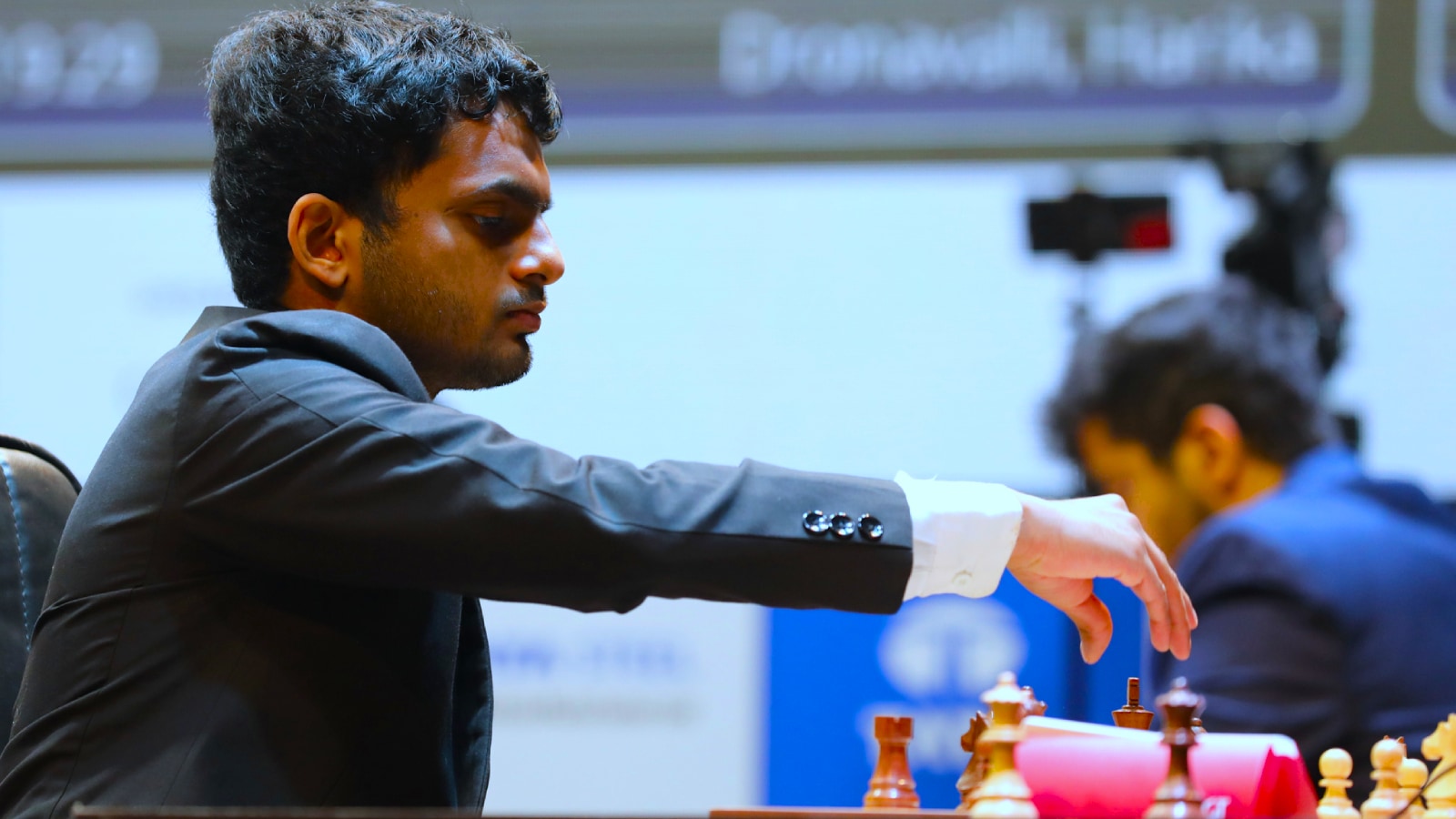
In the ever-evolving world of chess, few names embody calm brilliance quite like Grandmaster Nihal Sarin. This October, the young genius from Thrissur achieved a milestone long awaited by Indian chess fans — crossing the 2700 rating mark in the official FIDE ratings for the first time in his career.
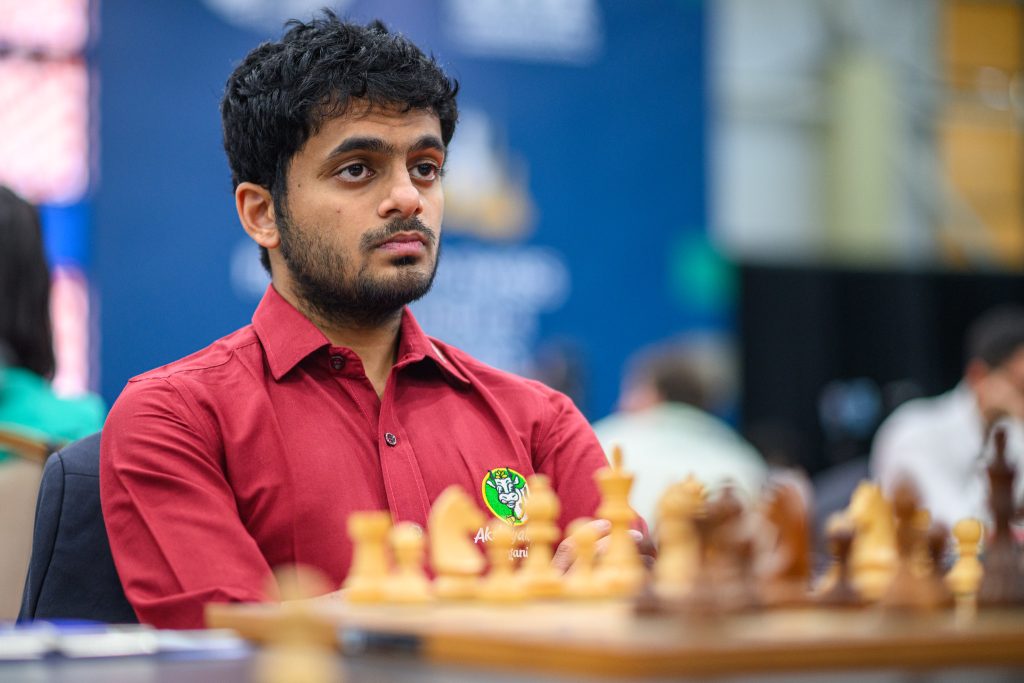
This achievement places Nihal among the elite ten Indian players who have broken into the exclusive “2700 Club.” It’s not just a number — it’s a symbol of relentless focus, unwavering consistency, and the maturity of a player who has been growing steadily under the global spotlight since childhood.
𝐅𝐫𝐨𝐦 𝐏𝐫𝐨𝐝𝐢𝐠𝐲 𝐭𝐨 𝐏𝐨𝐰𝐞𝐫𝐡𝐨𝐮𝐬𝐞

For those who have followed Nihal’s journey, this moment feels inevitable. Known worldwide for his intuitive understanding of chess and lightning-fast calculation, Nihal first captured global attention as a child prodigy who made complex positions look effortless. Over the years, he’s transitioned from a tactical wizard into a complete player, capable of battling the best minds in classical, rapid, and blitz formats alike.
The transformation didn’t happen overnight. It came from years of disciplined training, thoughtful analysis, and the right mentorship — particularly under Grandmaster Vishnu Prasanna, who also coached World Champion D. Gukesh. Together, they fine-tuned Nihal’s approach, shifting his strengths from rapid instincts to deep positional play. That evolution was evident at the FIDE Grand Swiss 2025, where Nihal’s consistent and courageous performance pushed him over the 2700 barrier.
𝐇𝐨𝐰 𝐇𝐞 𝐑𝐞𝐚𝐜𝐡𝐞𝐝 𝐭𝐡𝐞 𝐌𝐚𝐠𝐢𝐜𝐚𝐥 𝐌𝐚𝐫𝐤
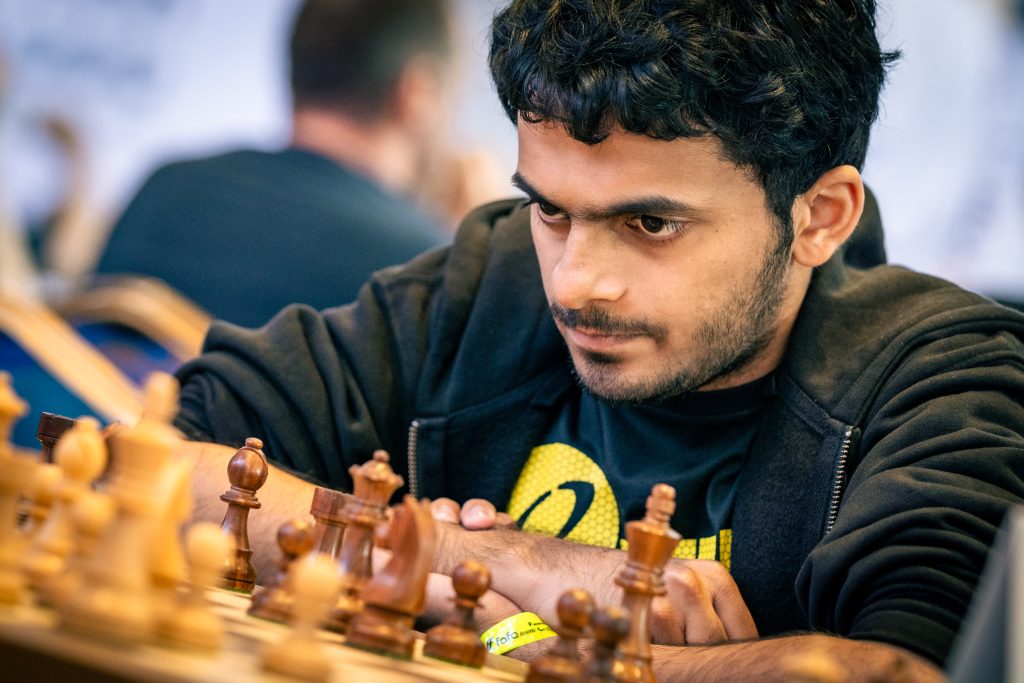
At the Grand Swiss, Nihal faced some of the world’s toughest grandmasters and walked away with a series of inspired results. His poise under pressure, ability to recover from slow starts, and remarkable endgame precision earned him valuable rating points — enough to reach the historic mark.
But the climb didn’t begin there. Earlier this year, Nihal enjoyed a solid run at the Tashkent Open (Agzamov Memorial), displaying a balance of aggression and control that marked his growing maturity. Each event this season added layers of strength to his game — and the October 2025 rating list simply confirmed what chess fans already sensed: Nihal Sarin is ready for the top tier.
𝐓𝐡𝐞 𝐒𝐢𝐠𝐧𝐢𝐟𝐢𝐜𝐚𝐧𝐜𝐞 𝐨𝐟 𝐭𝐡𝐞 𝟐𝟕𝟎𝟎 𝐂𝐥𝐮𝐛
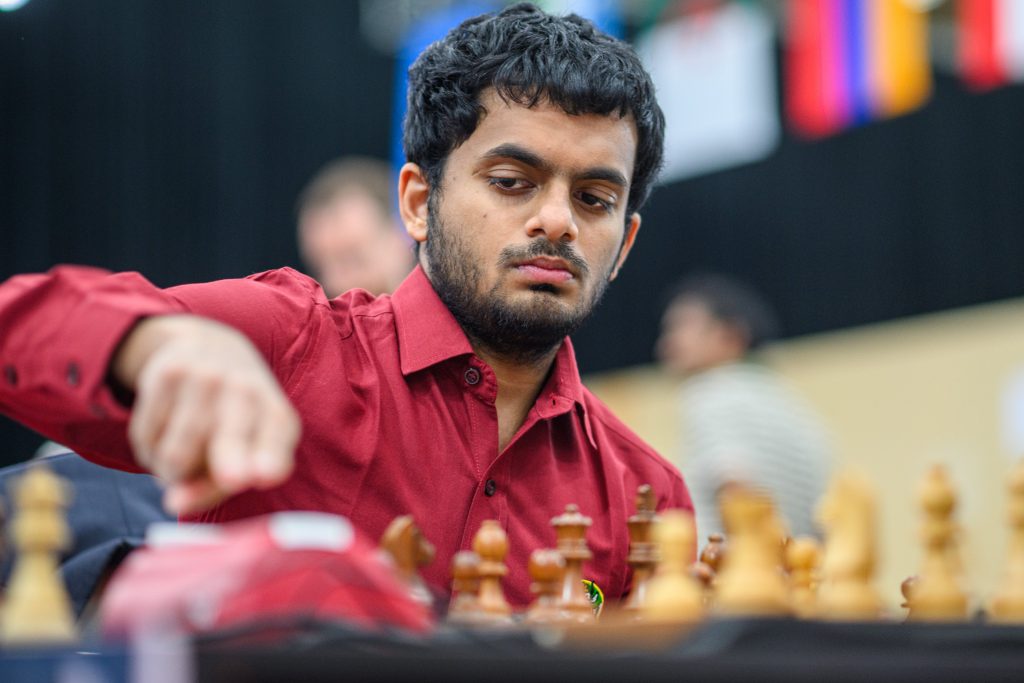
Crossing 2700 isn’t just a milestone — it’s an entrance into chess’s elite inner circle. It’s the point where a player begins to consistently challenge the likes of Carlsen, Ding, Nakamura, and Firouzja in classical events.
For India, it’s yet another proud moment in a golden era of chess excellence. From Anand’s legacy to the rise of Praggnanandhaa, Gukesh, Arjun Erigaisi, and now Nihal Sarin — the nation is crafting a dynasty of thinkers who redefine modern chess. Nihal’s entry into this elite group is a reminder that India’s chess story is only getting stronger.
𝐄𝐲𝐞𝐬 𝐨𝐧 𝐭𝐡𝐞 𝐄𝐮𝐫𝐨𝐩𝐞𝐚𝐧 𝐂𝐥𝐮𝐛 𝐂𝐮𝐩
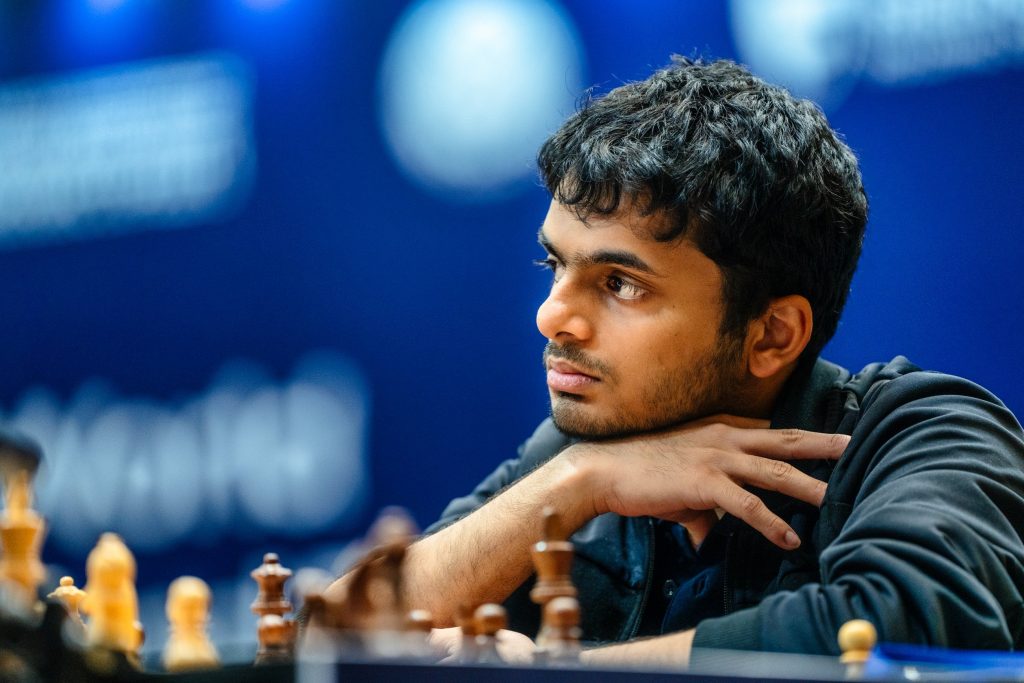
Fresh off this milestone, Nihal is gearing up for his next challenge — representing BayeganPendik Chess Sports Team at the European Club Cup 2025, scheduled from October 19–25. The event will feature some of the world’s strongest players across top European clubs, and Nihal’s inclusion in such a powerhouse team speaks volumes about his growing reputation in international circles.
Fans are eager to see how the newly-minted 2700 player performs under high stakes — a perfect testing ground for a mind that thrives in silence and precision.
𝐀 𝐋𝐞𝐬𝐬𝐨𝐧 𝐟𝐨𝐫 𝐄𝐯𝐞𝐫𝐲 𝐘𝐨𝐮𝐧𝐠 𝐏𝐥𝐚𝐲𝐞𝐫
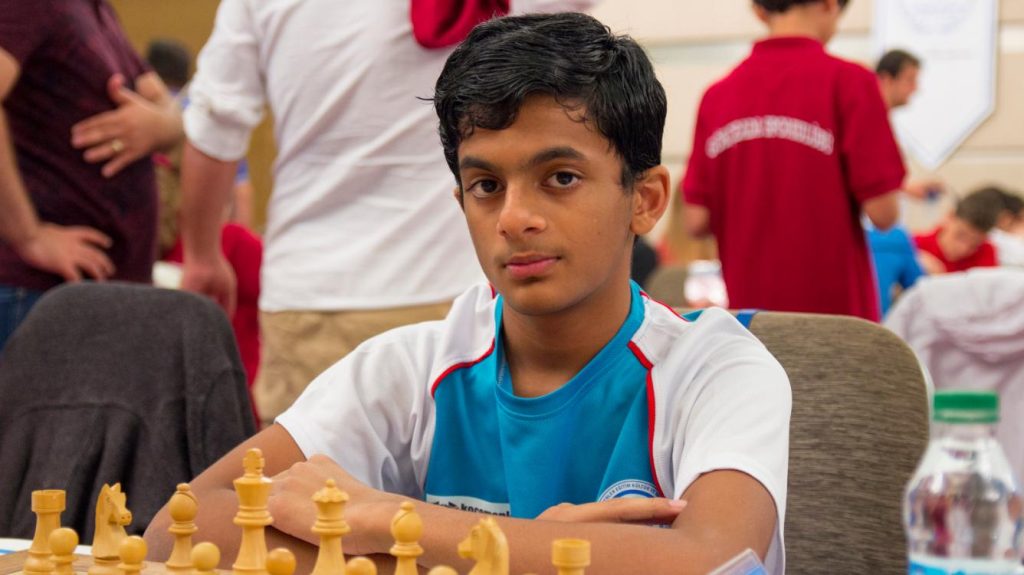
Nihal’s journey is more than an individual achievement — it’s a masterclass in patience and purposeful growth.
Here’s what young players can take from his story:
Consistency wins over chaos. Every tournament, win or lose, was part of Nihal’s larger plan.
Strong mentorship matters. His partnership with GM Vishnu Prasanna highlights the power of structured coaching.
Stay humble, stay hungry. Even with international fame, Nihal remains deeply grounded — and that’s what keeps his game evolving.
His journey shows that brilliance in chess isn’t just about speed or tactics; it’s about turning talent into timeless skill.
𝐁𝐞𝐲𝐨𝐧𝐝 𝐍𝐮𝐦𝐛𝐞𝐫𝐬 — 𝐓𝐡𝐞 𝐄𝐬𝐬𝐞𝐧𝐜𝐞 𝐨𝐟 𝐍𝐢𝐡𝐚𝐥
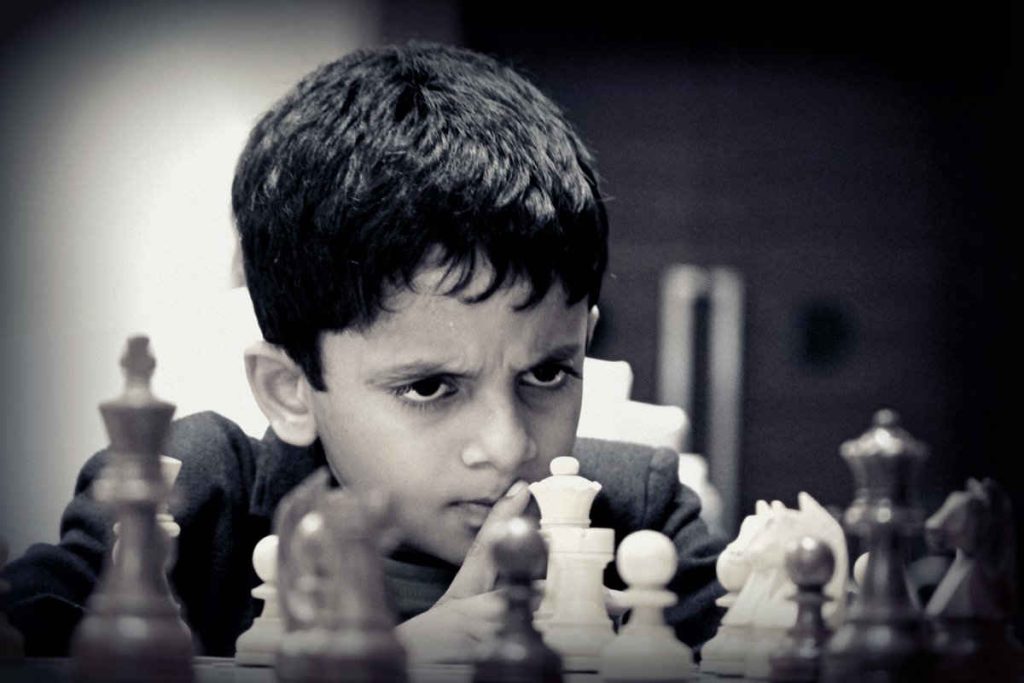
What makes Nihal special is not only his precision but also his personality. Quiet, focused, and often smiling after grueling battles, he plays with the composure of a monk and the creativity of an artist. His presence on the board is calm yet commanding — a rare blend that makes him a true fan favorite.
Breaking into 2700 is just the beginning of what promises to be an inspiring chapter. As the chess world watches closely, one thing is certain: Nihal Sarin isn’t just reaching milestones — he’s redefining them.
𝐅𝐢𝐧𝐚𝐥 𝐓𝐡𝐨𝐮𝐠𝐡𝐭
With each move, Nihal continues to prove that chess greatness is not a matter of age but of attitude. His journey from a gifted child to a world-class grandmaster reflects the future of Indian chess — intelligent, fearless, and unstoppable. 𝐆𝐌 𝐕𝐢𝐬𝐡𝐧𝐮 𝐏𝐫𝐚𝐬𝐚𝐧𝐧𝐚, 𝐂𝐨-𝐟𝐨𝐮𝐧𝐝𝐞𝐫 𝐨𝐟 𝐭𝐡𝐞 𝐌𝐚𝐝𝐫𝐚𝐬 𝐒𝐜𝐡𝐨𝐨𝐥 𝐨𝐟 𝐂𝐡𝐞𝐬𝐬 𝐚𝐧𝐝 𝐟𝐨𝐫𝐦𝐞𝐫 𝐜𝐨𝐚𝐜𝐡 𝐨𝐟 𝐖𝐨𝐫𝐥𝐝 𝐂𝐡𝐚𝐦𝐩𝐢𝐨𝐧 𝐃. 𝐆𝐮𝐤𝐞𝐬𝐡, continues to inspire and shape the next generation of talents. Nihal’s story is living proof of what expert training and dedication can achieve.
So why wait? 𝐄𝐧𝐫𝐨𝐥𝐥 𝐲𝐨𝐮𝐫 𝐤𝐢𝐝𝐬 𝐚𝐭 𝐭𝐡𝐞 𝐌𝐚𝐝𝐫𝐚𝐬 𝐒𝐜𝐡𝐨𝐨𝐥 𝐨𝐟 𝐂𝐡𝐞𝐬𝐬— where future champions like Nihal and Gukesh begin their journey to rule the chess world.
𝐖𝐡𝐚𝐭𝐞𝐯𝐞𝐫 𝐭𝐡𝐞 𝐚𝐧𝐬𝐰𝐞𝐫, 𝐭𝐡𝐞 𝐛𝐨𝐚𝐫𝐝 𝐢𝐬 𝐫𝐞𝐚𝐝𝐲 — 𝐚𝐧𝐝 𝐬𝐨 𝐢𝐬 𝐡𝐞.
♟️ Ready to Level Up Your Game?
𝐉𝐨𝐢𝐧 𝐌𝐚𝐝𝐫𝐚𝐬 𝐒𝐜𝐡𝐨𝐨𝐥 𝐨𝐟 𝐂𝐡𝐞𝐬𝐬 𝐭𝐨 𝐝𝐞𝐟𝐞𝐚𝐭 𝐲𝐨𝐮𝐫 𝐨𝐩𝐩𝐨𝐧𝐞𝐧𝐭 𝐰𝐢𝐭𝐡 𝐛𝐫𝐢𝐥𝐥𝐢𝐚𝐧𝐜𝐞 𝐚𝐧𝐝 𝐩𝐫𝐞𝐜𝐢𝐬𝐢𝐨𝐧!
📍 Locations: T.Nagar | Anna Nagar | Mandaveli | Online
📞 Call: +91 98404 03376
🌐 Visit: www.madrasschoolofchess.com
📲 Follow us: @madrasschoolofchess
Chess Blunders: Why Players Throw Away Winning Positions
Sep 23rd, 2025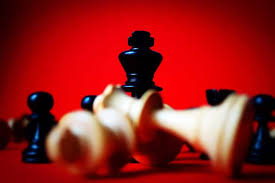
There is a saying that echoes in every tournament hall: “The hardest game to win is the one that’s already won.”
At first, it sounds puzzling. After all, once a player has the advantage, the rest should be simple — right? But anyone who has played chess knows the truth: winning positions are delicate, and many victories have dissolved into draws or even defeats.
Why does this happen so often? Why is it that players falter not in the struggle to gain an advantage, but in the act of converting it? The answer lies in the fascinating blend of psychology, strategy, and discipline that defines chess.
- The Psychological Traps of Winning Positions

A position of strength is not just a test of skill — it’s a test of the mind.
Overconfidence
Once ahead, players often breathe a sigh of relief. The intensity fades, and calculation becomes sloppy. The brain shifts from “hunting for victory” to “expecting victory.” This subtle change is dangerous, because chess punishes even a moment of carelessness.
Excessive Caution
The opposite problem is equally common. With a winning position in hand, players suddenly become afraid of making any mistake. The desire to protect the advantage makes them passive. Instead of finishing off the game, they hand over the initiative to their opponent.
Time Pressure
Many victories are lost on the clock, not on the board. Players often burn precious minutes searching for the most “beautiful” or “cleanest” win. When the time finally runs out, panic sets in and accuracy disappears.
Emotional Tilt
Making one mistake in a balanced game is frustrating. But making a slip in a winning position feels devastating. That emotional shock often leads to further errors, turning an almost certain win into a painful collapse.
Psychology, more than calculation, is often the first enemy of conversion.
- Strategic and Technical Missteps

Even with nerves of steel, strategy can betray the player who forgets the fundamentals.
Imprecision in Calculation
A common error is assuming intuition is enough once the advantage is secured. But winning often requires more accuracy, not less. One careless move can open doors that should have remained closed.
Ignoring Counterplay
A winning position does not mean the opponent has no ideas. Too many players dismiss small threats until they snowball into game-changing opportunities. Respecting the opponent’s resources is essential, even when miles ahead.
Piece Coordination
A material edge means little if the pieces do not work together. Misplaced rooks, passive bishops, or isolated queens can turn a dominant position into chaos. Chess is about harmony, and even in victory, coordination matters.
Endgame Challenges
The endgame is where many victories die. Rook endings, in particular, are notorious for being “drawn despite advantage.” Stalemates, perpetual checks, and pawn races lurk around every corner, waiting for a single careless move.
- Tactical Oversights That Flip the Board
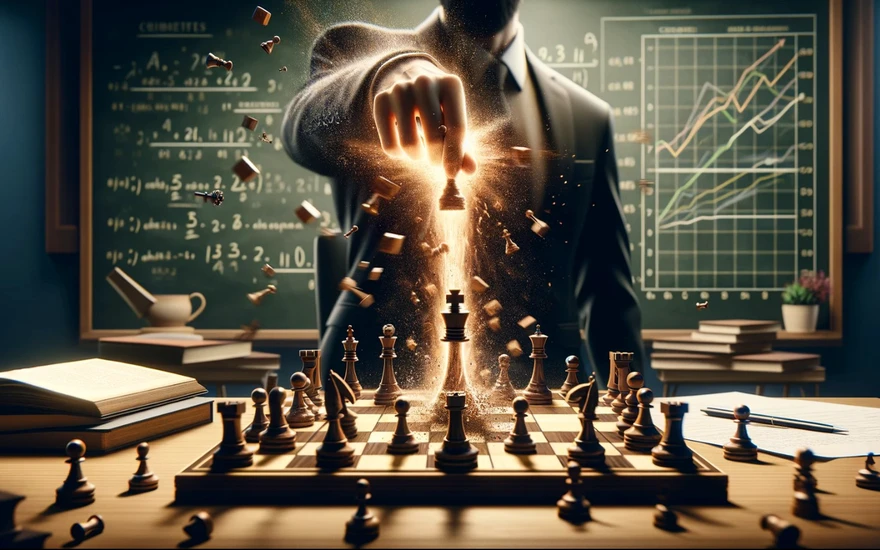
Chess is unforgiving when tactics are ignored. Even in dominant positions, small tactical lapses can undo everything.
Forgetting Forcing Moves
Checks, captures, and threats are the heartbeat of chess. Yet players often overlook them once they feel the game is under control. A single forcing move by the opponent can swing the evaluation from +5 to 0.
Premature Simplification
“Trade pieces to win” is common advice, but blindly following it is dangerous. Exchanging without calculation can erase an advantage, especially if the simplified position helps the defender.
Draw Tricks
The defending side is often at their most resourceful when under pressure. Perpetual checks, stalemates, and repetition tricks appear exactly when the attacker stops paying attention. What looked like a certain win suddenly dissolves into a half-point.
- The Discipline of Conversion

How can players prevent these collapses? The key is discipline — not only in calculation, but in mindset.
Every Move Still Matters
A winning position is not a guarantee. The board does not play itself. Treat every move with the same seriousness as in the opening battle.
Respect the Defender’s Tenacity
Strong defenders refuse to crumble. Assuming the opponent will resign is an illusion. Victory must be earned, move by move.
Prophylactic Thinking
Conversion is not just about pursuing your plan. It is equally about cutting off the opponent’s last chances. Stopping counterplay is often the final step to securing the point.
Time Management
It is better to win with a practical, solid line than to lose chasing a flashy idea with seconds on the clock. Efficiency on the clock is as critical as accuracy on the board.
- Lessons From Countless Games

History is filled with games where players achieved everything they could hope for — extra pawns, active pieces, dominant positions — and still failed to convert. In each case, the reasons follow the same themes: a moment of fear, an unnecessary retreat, an overlooked tactic, or wasted time.
The beauty of chess lies in this razor’s edge. The game reminds us that no position is truly safe until the final move is played.
Final Thought
The irony of chess is clear: the moment victory feels certain is often the moment danger is greatest. A player who relaxes too soon risks losing everything that was built.
The board punishes arrogance, fear, distraction, and impatience alike. Winning positions demand calm nerves, sharp focus, and precise execution until the very end.
💡 The most dangerous place in chess isn’t being behind — it’s being ahead and believing the game is already yours.
♟️ Ready to Level Up Your Game?
𝐉𝐨𝐢𝐧 𝐌𝐚𝐝𝐫𝐚𝐬 𝐒𝐜𝐡𝐨𝐨𝐥 𝐨𝐟 𝐂𝐡𝐞𝐬𝐬 𝐭𝐨 𝐝𝐞𝐟𝐞𝐚𝐭 𝐲𝐨𝐮𝐫 𝐨𝐩𝐩𝐨𝐧𝐞𝐧𝐭 𝐰𝐢𝐭𝐡 𝐛𝐫𝐢𝐥𝐥𝐢𝐚𝐧𝐜𝐞 𝐚𝐧𝐝 𝐩𝐫𝐞𝐜𝐢𝐬𝐢𝐨𝐧!
📍 Locations: T.Nagar | Anna Nagar | Mandaveli | Online
📞 Call: +91 98404 03376
🌐 Visit: www.madrasschoolofchess.com
📲 Follow us: @madrasschoolofchess
𝐀 𝐇𝐢𝐬𝐭𝐨𝐫𝐢𝐜 𝐓𝐫𝐢𝐮𝐦𝐩𝐡: 𝐌𝐚𝐝𝐫𝐚𝐬 𝐒𝐜𝐡𝐨𝐨𝐥 𝐨𝐟 𝐂𝐡𝐞𝐬𝐬 𝐂𝐨𝐚𝐜𝐡 𝐃𝐚𝐤𝐬𝐡𝐢𝐭𝐚 𝐊𝐮𝐦𝐚𝐰𝐚𝐭 𝐂𝐫𝐞𝐚𝐭𝐞𝐬 𝐇𝐢𝐬𝐭𝐨𝐫𝐲 𝐚𝐭 𝐑𝐚𝐣𝐚𝐬𝐭𝐡𝐚𝐧 𝐒𝐞𝐧𝐢𝐨𝐫 𝐒𝐭𝐚𝐭𝐞 𝐂𝐡𝐞𝐬𝐬 𝐂𝐡𝐚𝐦𝐩𝐢𝐨𝐧𝐬𝐡𝐢𝐩 𝟐𝟎𝟐𝟓
Sep 09th, 2025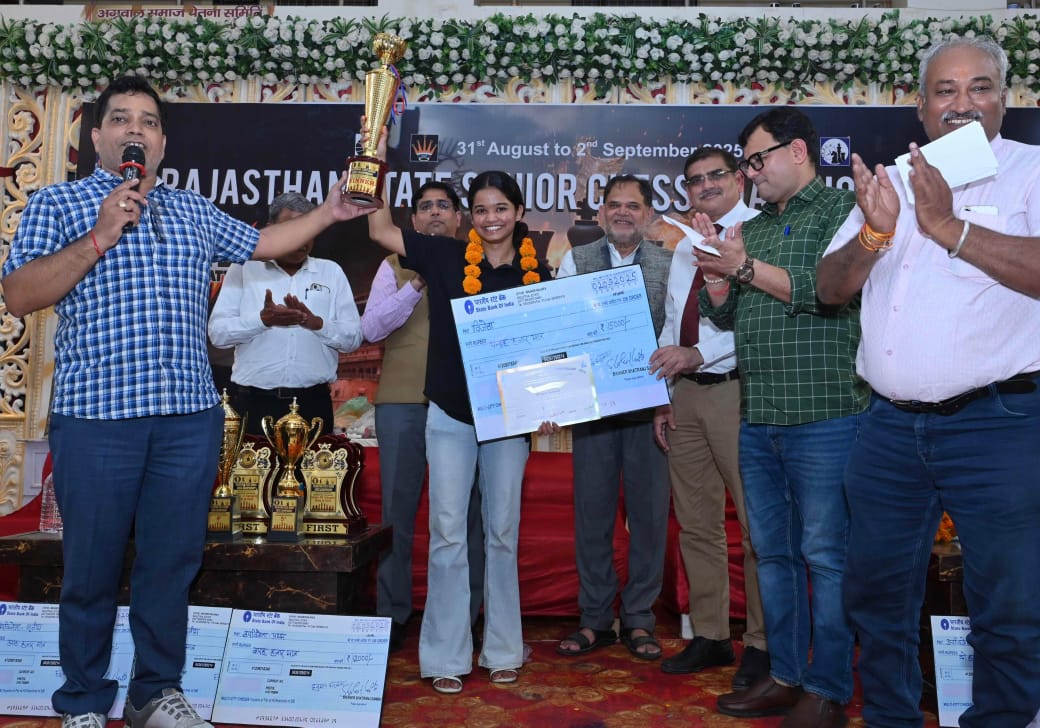
The chess world in Rajasthan witnessed a moment of sheer brilliance as Ms. Dakshita Kumawat, Online Coach of Madras School of Chess, etched her name into history. At just 2025’s Rajasthan Senior State Chess Championship, held in Bikaner from August 31 to September 2, she not only clinched the prestigious title but also broke barriers, becoming the youngest-ever champion and only the second woman in history to win Rajasthan’s most coveted open title.
𝐁𝐞𝐚𝐭𝐢𝐧𝐠 𝐭𝐡𝐞 𝐎𝐝𝐝𝐬 𝐢𝐧 𝐚 𝐅𝐢𝐞𝐫𝐜𝐞 𝐅𝐢𝐞𝐥𝐝
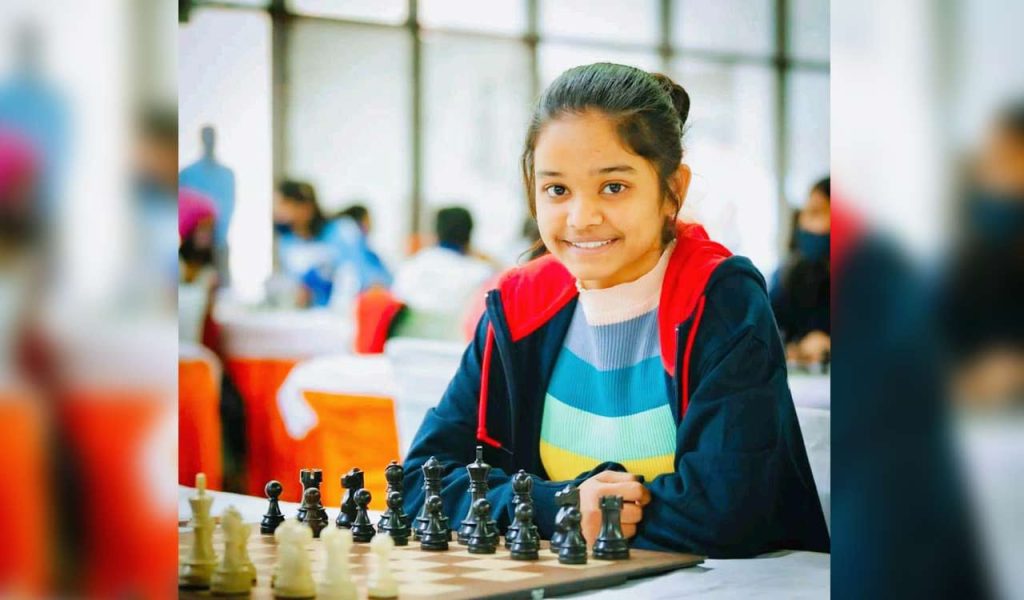
The championship saw a massive turnout of 303 participants, including seasoned veterans and highly-rated players. Seeded 6th at the start of the tournament, Dakshita displayed nerves of steel and a sharp tactical vision throughout the event. Across 8 intense rounds, she remained unbeaten, scoring 6 wins and 2 draws, amassing an impressive 7 points. Her consistency, strategic depth, and fearless play left both opponents and spectators in awe.
Her run wasn’t just about victory—it was about domination. With each round, Dakshita grew stronger, proving that preparation, focus, and determination can outshine even the most experienced contenders.
𝐀 𝐂𝐡𝐚𝐦𝐩𝐢𝐨𝐧 𝐨𝐟 𝐂𝐡𝐚𝐦𝐩𝐢𝐨𝐧𝐬

What makes this victory even more extraordinary is that Dakshita is already the reigning Rajasthan Women’s Senior Champion, a crown she has proudly held for four consecutive years. In fact, she has remained undefeated in every women’s state-level event she has participated in, a testament to her resilience and commitment to the game.
By conquering the Senior Open Championship, she has transcended barriers, becoming a role model not just for women, but for every aspiring chess player who dreams of competing at the highest level.
𝐀 𝐇𝐢𝐬𝐭𝐨𝐫𝐢𝐜 𝐌𝐨𝐦𝐞𝐧𝐭 𝐟𝐨𝐫 𝐖𝐨𝐦𝐞𝐧 𝐢𝐧 𝐂𝐡𝐞𝐬𝐬
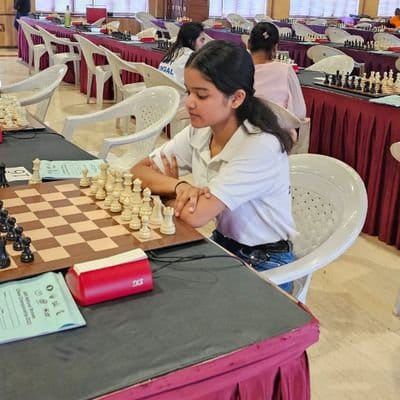
After a gap of seven years, a woman has once again claimed Rajasthan’s most prestigious open chess title. Dakshita’s win is not just a personal achievement—it is a historic breakthrough for women in chess, symbolizing the growing strength and recognition of female players in competitive arenas traditionally dominated by men.
Her success is a powerful reminder that talent knows no boundaries. With her remarkable journey, Dakshita has become a torchbearer for the next generation of women in chess, inspiring countless young minds to chase their dreams across the 64 squares.
𝐌𝐚𝐝𝐫𝐚𝐬 𝐒𝐜𝐡𝐨𝐨𝐥 𝐨𝐟 𝐂𝐡𝐞𝐬𝐬: 𝐒𝐡𝐚𝐩𝐢𝐧𝐠 𝐂𝐡𝐚𝐦𝐩𝐢𝐨𝐧𝐬 𝐟𝐨𝐫 𝐓𝐨𝐦𝐨𝐫𝐫𝐨𝐰
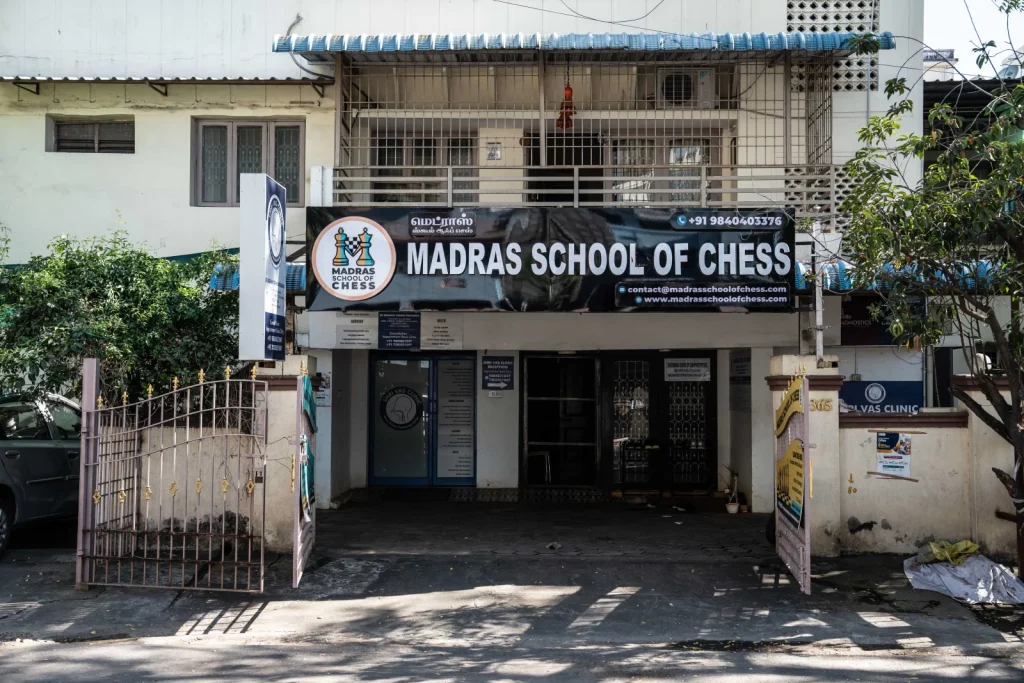
At Madras School of Chess, we take immense pride in having Dakshita Kumawat as part of our coaching team. Her journey is a reflection of our academy’s vision—to nurture talent, instill discipline, and create champions who not only win titles but also inspire communities.
Her triumph is proof that with the right guidance, dedication, and opportunities, young players can rise to unimaginable heights. For the students of MSC, learning from a coach of such caliber is a privilege that brings them closer to their own dreams of chess glory.
𝐓𝐡𝐞 𝐑𝐨𝐚𝐝 𝐀𝐡𝐞𝐚𝐝
For Dakshita, this is just the beginning. With her hunger for success and relentless drive, the chess world can expect many more milestones from her in the years to come. As she continues to break barriers and rewrite records, one thing is certain—her name will be remembered as one of the brightest stars in Rajasthan’s and India’s chess history.
✅𝐀𝐭 𝐌𝐚𝐝𝐫𝐚𝐬 𝐒𝐜𝐡𝐨𝐨𝐥 𝐨𝐟 𝐂𝐡𝐞𝐬𝐬, 𝐰𝐞 𝐜𝐞𝐥𝐞𝐛𝐫𝐚𝐭𝐞 𝐧𝐨𝐭 𝐣𝐮𝐬𝐭 𝐯𝐢𝐜𝐭𝐨𝐫𝐢𝐞𝐬, 𝐛𝐮𝐭 𝐭𝐡𝐞 𝐬𝐭𝐨𝐫𝐢𝐞𝐬 𝐨𝐟 𝐩𝐞𝐫𝐬𝐞𝐯𝐞𝐫𝐚𝐧𝐜𝐞, 𝐠𝐫𝐢𝐭, 𝐚𝐧𝐝 𝐛𝐫𝐢𝐥𝐥𝐢𝐚𝐧𝐜𝐞 𝐭𝐡𝐚𝐭 𝐬𝐡𝐚𝐩𝐞 𝐭𝐡𝐞𝐦.
♟️ Ready to Level Up Your Game?
👉 𝐉𝐨𝐢𝐧 𝐌𝐒𝐂 – 𝐭𝐡𝐞 𝐛𝐞𝐬𝐭 𝐜𝐡𝐞𝐬𝐬 𝐚𝐜𝐚𝐝𝐞𝐦𝐲 𝐧𝐞𝐚𝐫 𝐲𝐨𝐮, 𝐰𝐡𝐞𝐫𝐞 𝐞𝐯𝐞𝐫𝐲 𝐦𝐨𝐯𝐞 𝐭𝐚𝐤𝐞𝐬 𝐲𝐨𝐮 𝐜𝐥𝐨𝐬𝐞𝐫 𝐭𝐨 𝐛𝐞𝐜𝐨𝐦𝐢𝐧𝐠 𝐚 𝐜𝐡𝐚𝐦𝐩𝐢𝐨𝐧.
📍 Locations: T.Nagar | Anna Nagar | Mandaveli | Online
📞 Call: +91 98404 03376
🌐 Visit: www.madrasschoolofchess.com
📲 Follow us: @madrasschoolofchess
Mastering Chess Position Evaluation: A Practical 5-Step Guide
Aug 26th, 2025
Evaluating a position accurately is a key skill for chess players seeking to improve their game. While beginners may rely on simple tactics or material count, understanding the broader dynamics of a position is crucial as one progresses. Drawing insights from experienced Grandmasters and multiple professional sources, this guide simplifies the process of evaluation into five core steps. Each step offers a practical lens to assess the board and make better decisions during a game.

Why Evaluate Positions in Chess?
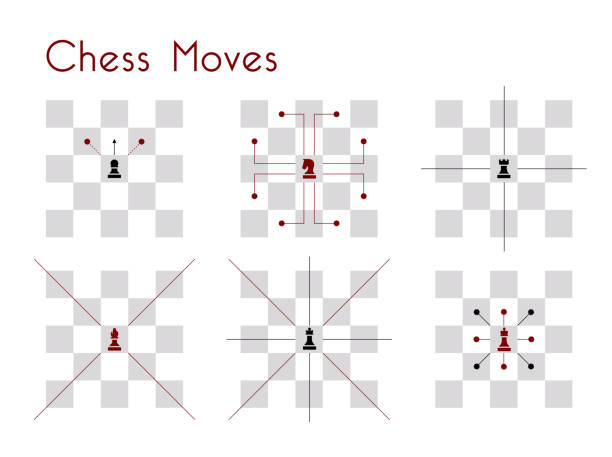
In any given position, players typically have several viable moves. Without a clear evaluation, it’s difficult to decide which move aligns best with the position’s requirements. Evaluation acts as a strategic compass, guiding players towards choices that improve their position or maintain their advantage. Rather than relying on engine numbers like +0.4, players benefit more from human-centric assessments such as ‘better’, ‘worse’, or ‘unclear but with chances’.
The 5-Step Method for Evaluating Chess Positions
1. King Safety

The safety of the King is paramount. Even with superior material or positioning, an unsafe King can end the game abruptly. Evaluating King safety includes checking if the King is castled, whether there are open files nearby, pawn shields, and how many defensive and attacking pieces are active around the King. A general rule is: if your King is safer, avoid trading pieces. If not, aim to simplify.
2. Material Balance
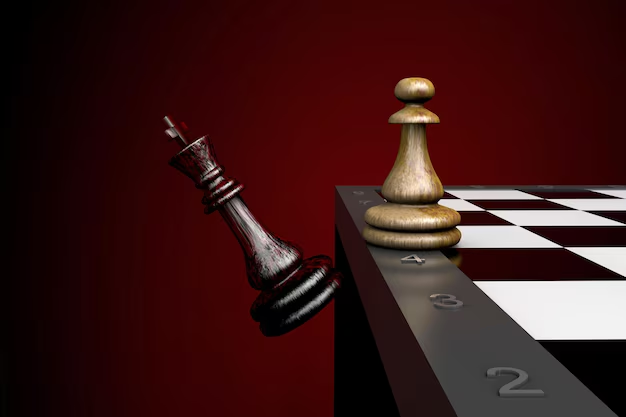
Only after ensuring King safety should material be evaluated. Count each side’s total material, but understand that a simple material advantage doesn’t guarantee a better position. Always weigh material against the activity and coordination of pieces.
3. Piece Activity
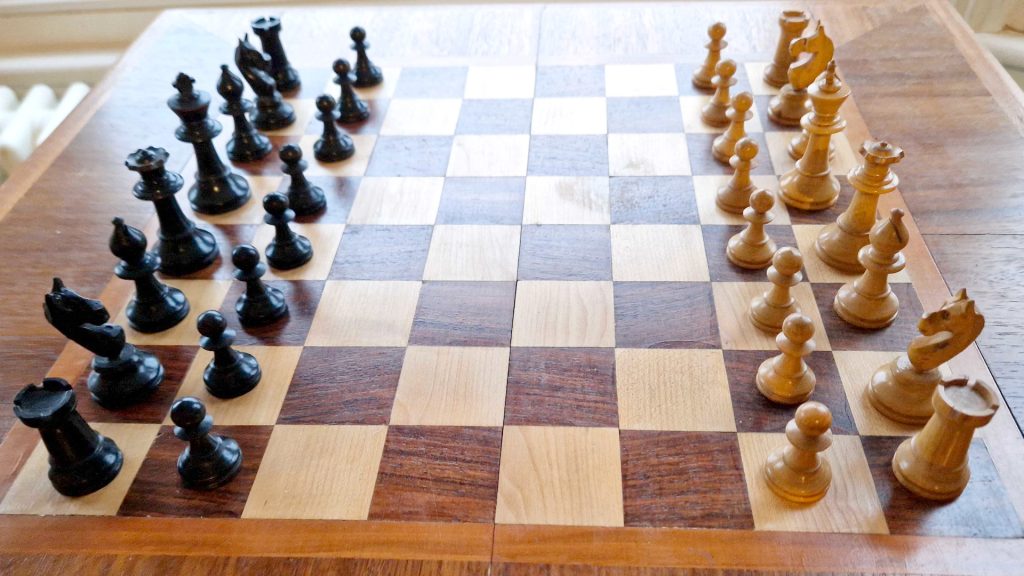
Material is potential; activity is what the pieces are actually achieving. A rook trapped on its first rank is less valuable than an active Knight deep in enemy territory. Always check which side has better control of central squares, more active pieces, and tactical opportunities.
4. Pawn Structure and Long-Term Factors

Pawn structure influences the game’s long-term strategy. Weaknesses like isolated, doubled, or backward pawns often become targets in the endgame. A healthy structure allows fluid piece movement and supports long-term planning. When short-term advantages are equal, structure becomes decisive.
5. Space Advantage
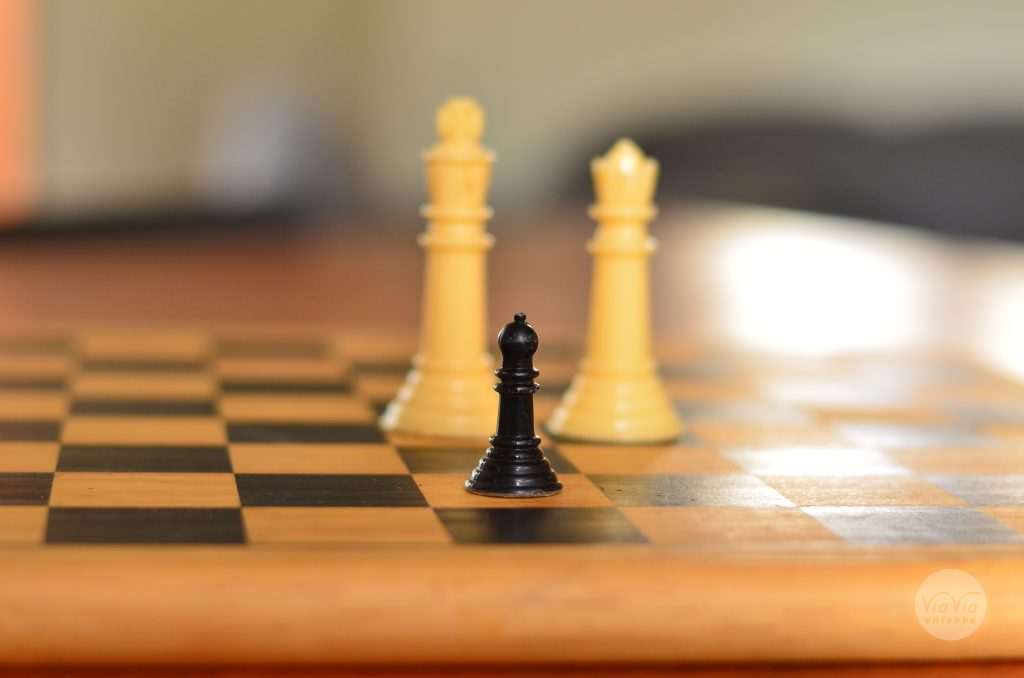
The side with more space typically enjoys greater mobility and coordination. With more pieces on the board, limited space restricts development and planning. The general principle here is: the side with less space should exchange pieces; the side with more space should keep them.
How This Affects Decision Making
When evaluating a position, determine whether the advantages lie in short-term factors (King safety, material, activity) or long-term factors (structure, space). If leading in short-term factors, act decisively and seek immediate benefits. If ahead in long-term elements, avoid complications and look to slowly convert your advantage.
Conclusion
Evaluating a chess position effectively is not about memorizing formulas—it’s about training your chess intuition and applying it consistently. By following this 5-step method, players at any level can begin to see the game with more clarity. Over time, this process becomes second nature, helping you make sound decisions, avoid blunders, and develop a deeper understanding of chess strategy.
♟️ Ready to Level Up Your Game?
𝐉𝐨𝐢𝐧 𝐌𝐚𝐝𝐫𝐚𝐬 𝐒𝐜𝐡𝐨𝐨𝐥 𝐨𝐟 𝐂𝐡𝐞𝐬𝐬 𝐭𝐨 𝐝𝐞𝐟𝐞𝐚𝐭 𝐲𝐨𝐮𝐫 𝐨𝐩𝐩𝐨𝐧𝐞𝐧𝐭 𝐰𝐢𝐭𝐡 𝐛𝐫𝐢𝐥𝐥𝐢𝐚𝐧𝐜𝐞 𝐚𝐧𝐝 𝐩𝐫𝐞𝐜𝐢𝐬𝐢𝐨𝐧!
📍 Locations: T.Nagar | Anna Nagar | Mandaveli | Online
📞 Call: +91 98404 03376
🌐 Visit: www.madrasschoolofchess.com
📲 Follow us: @madrasschoolofchess
Nihal Sarin Makes Bold Move, Trains with Gukesh’s Former Mentor: GM Vishnu Prasanna
Aug 11th, 2025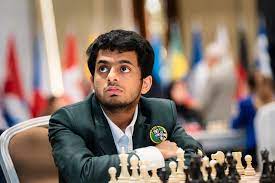
In the Indian chess circuit, new collaborations between top talents and renowned trainers often signal big changes — and the latest partnership between GM Nihal Sarin and GM Vishnu Prasanna is no exception.
D Gukesh’s former trainer and current co-founder of Madras School of Chess, GM Vishnu Prasanna, began working with Nihal Sarin in March 2024. Nihal, widely respected for his brilliance in faster formats like blitz and rapid, is now aiming to sharpen his classical chess skills under Vishnu’s expert guidance. The primary focus of their work has been to improve Nihal’s classical rating in preparation for prestigious events like the FIDE Grand Swiss and the FIDE World Cup later this year.
GM Vishnu Prasanna – Shaping Champions
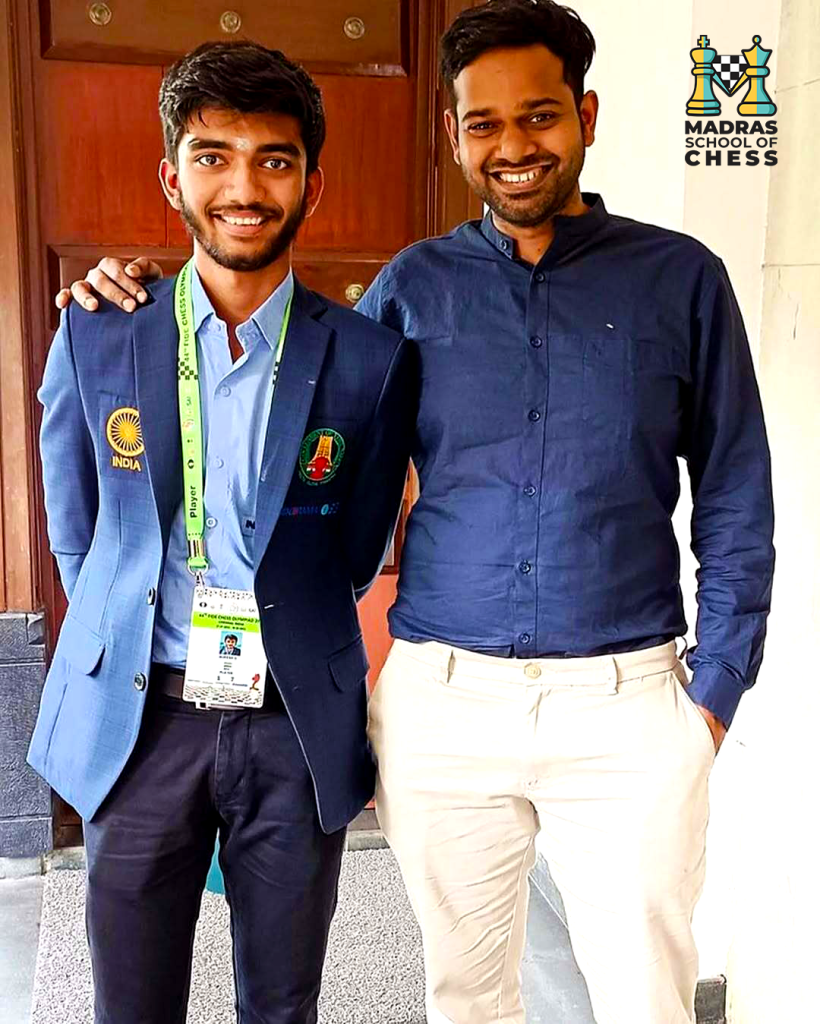
GM Vishnu Prasanna is celebrated for his deep strategic understanding and ability to nurture young talent into elite competitors. Most notably, he coached D Gukesh, the 2024 World Chess Champion, during his formative years, playing a pivotal role in Gukesh’s rise to global prominence. Under Vishnu’s mentorship, Gukesh built the foundation that would eventually help him achieve chess’s highest honor. Vishnu’s calm, analytical approach and ability to adapt training methods for each student have earned him the respect of players worldwide.
A Turning Point for Nihal Sarin
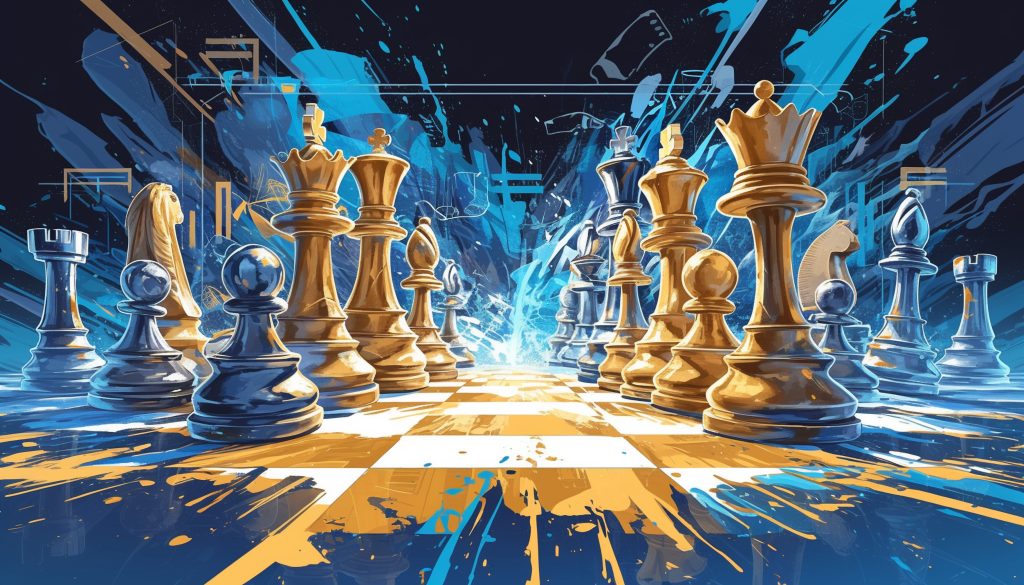
While Nihal’s speed chess prowess has dazzled fans, his results in classical formats have faced hurdles. Former trainer Srinath Narayanan told ESPN, “He has certainly stagnated. It is important to look forward, you cannot keep looking backwards. Stagnation is natural for someone so young at the elite level, but the next push can come only with confidence.”
That “next push” is exactly what Nihal hopes to find under GM Vishnu Prasanna. Their training sessions have focused on broadening Nihal’s opening repertoire, refining his calculation skills, and reinforcing his endgame techniques — all critical areas for consistent performance in classical events.
Recent Challenges on the Board
At the ongoing Chennai Masters, Nihal has experienced tough results despite finding promising positions in several games. He lost to Vidit Gujrathi after a collapse from a winning position in Round 3, gave away a winning advantage against Anish Giri in Round 2, and was defeated by Vincent Keymer in the opener — a game he was expected to draw. These setbacks underline the need for fine-tuning his classical performance, something Vishnu is determined to help him achieve.
Nihal Sarin scored his first win in the Chennai Grand Masters 2025, and in what style! Nihal took down India No.1 Arjun Erigaisi with the White pieces in the 4th round in a rollercoaster game. This hard-fought victory puts him at 1.5/4 points, showing that his new training regimen is beginning to bear fruit.
Madras School of Chess – Where Champions Are Made
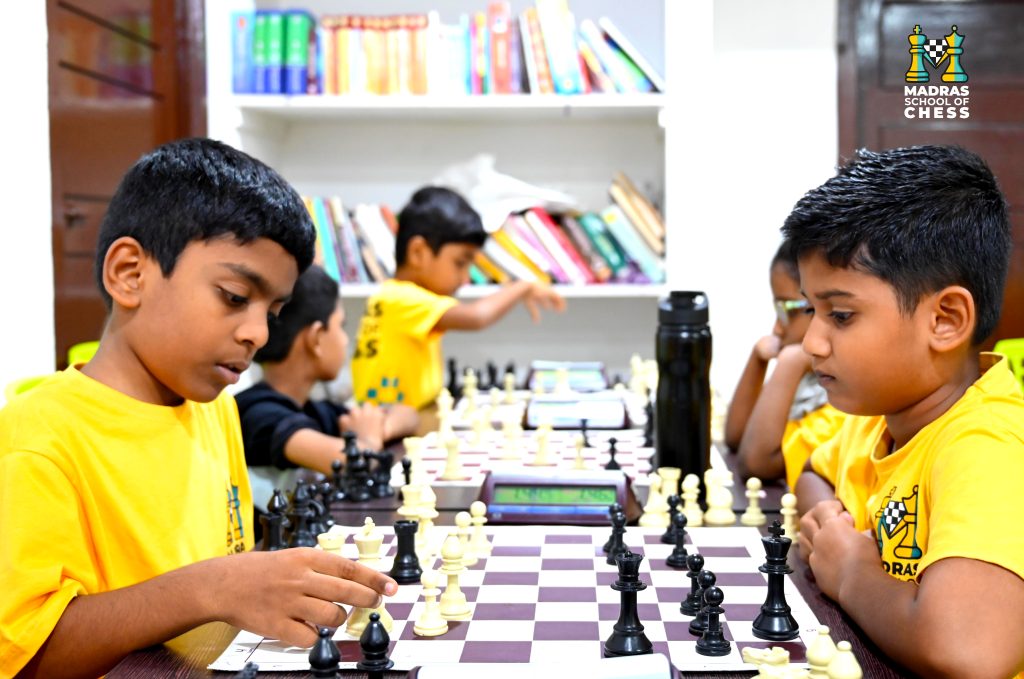
At Madras School of Chess, we take pride in having world-class coaches like GM Vishnu Prasanna on our team. His track record of shaping players who go on to achieve international success — including a World Chess Champion — is a testament to the quality of training MSC offers. Whether you’re an aspiring beginner or an advanced competitor, MSC provides personalized training with FIDE-rated coaches and mentorship from elite Grandmasters and International Masters.
Train with the best. Be the next champion!
Join Madras School of Chess today and start your journey toward chess greatness.
📍 Locations: T.Nagar | Anna Nagar | Mandaveli | Online
📞 Call: +91 98404 03376
🌐 Visit: www.madrasschoolofchess.com
📲 Follow us: @madrasschoolofchess
The Silent Ambush: Cracking Open the Secrets of the Hedgehog Defense
Jul 22nd, 2025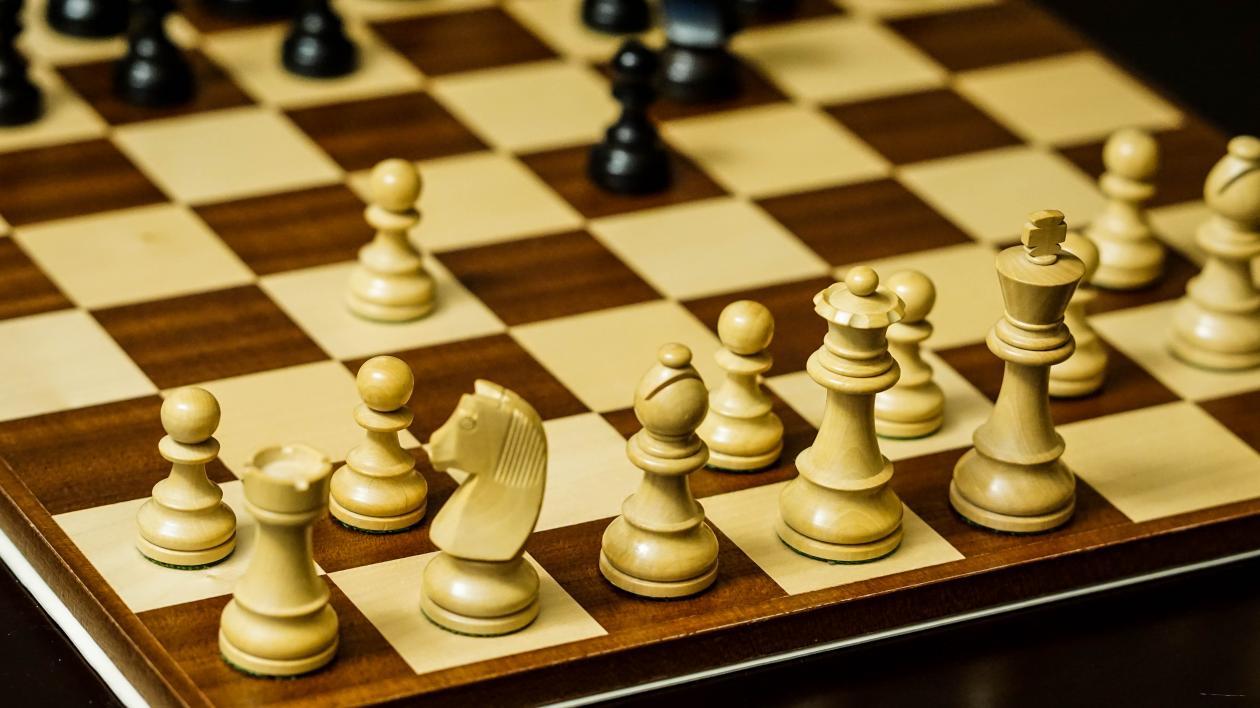
The Hedgehog Defense isn’t just another opening choice—it’s a psychological battleground. Black willingly sacrifices space, adopting a compact, defensive posture. But hidden within that cramped-looking formation lies explosive potential—when White overextends, Black strikes back with potent breaks, turning apparent passivity into lethal weaponry

🕰️ Origins & Hypermodern Roots
Emerging from the early 20th-century hypermodern school, the Hedgehog rejects classical dogma centered on immediate pawn-based occupation. Instead, it embodies ideas pioneered by Nimzowitsch, Réti, and Tartakower: control the center indirectly, provoke your opponent, then undermine and exploit. This solid yet dynamic framework arises most often via the English Opening, though it can also spring from Sicilian, Nimzo-Indian, or Queen’s Indian systems
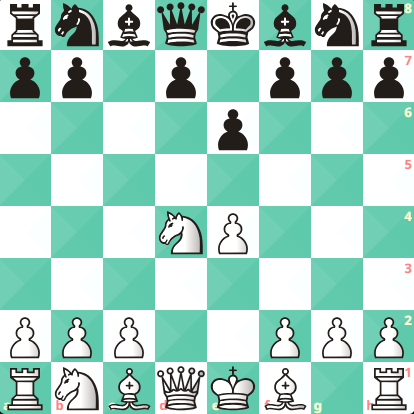
Core Strategic Themes
1. Provoke & Suffocate
Black’s compact pawn structure and restrained piece play subtly pressure White, tempting them into central overreach. Once those advanced pawns at e4 or c4 turn into liabilities, Black pounces with tactical breaks.
2. Break and Explode
Timing is everything. Moves like …b5 and …d5 shatter White’s center when they’re least expecting it, capitalizing on overextension. Grandmasters such as Karpov and Ljubojević have demonstrated this in high-level play.
3. Counterplay Pathways
The Hedgehog setup supports several active plans: knight maneuvers (Nd7–c5/e5), fianchetto bishop pressure along long diagonals, and flank advances like …h5–h4 aimed at kingside attacks
Stay patient:
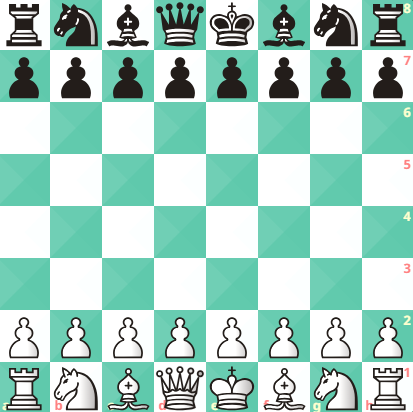
- Formation setup: Position pawns on a6–b6–d6–e6, bishops on b7/e7, knights on d7/f6, queen on c7, and rooks usually on c8/e8.
- Flexibility: Be ready to adjust—knights may reroute, bishops shift from e7 to c7 (via d8), and rooks support central breaks.
- Avoid impatience: Premature pawn pushes weaken the structure. The hallmark of Hedgehog play is restraint until explosive opportunity arises
Notable Games & Modern Insights
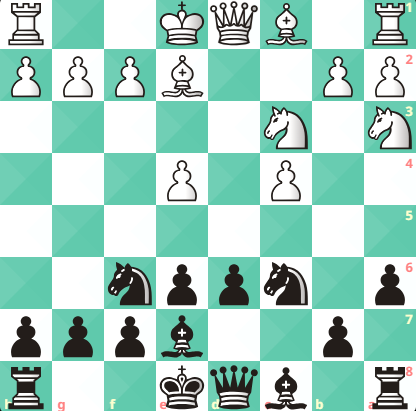
- FM Gertsog’s “Unleash the Spikes” workshop (July 2025) showcased three instructive master games—Flores vs. Gertsog, Hort vs. Ljubojević, and Karpov vs. Andersson—highlighting precise timing and psychological nuances.
- Karpov used the Hedgehog with clinical precision against Torre, baiting him into overreach and retaliating decisively.
- Today, coaches like GM Petrov and Herman Grooten teach it as a surprise weapon—many opponents lack detailed preparation, making it effective even in amateur play
Pros & Cons
| ✅ Advantages | ⚠️ Challenges |
|---|---|
| Compact and solid structure | Very cramped—no wrong move allowed |
| Builds latent energy for powerful breaks | Requires patience, deep positional understanding |
| Often catches opponents off guard | Mishandled timing leads to collapse |
Becoming a Hedgehog Master
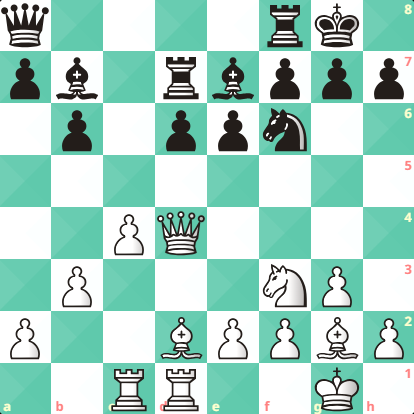
- Study foundational text: My System by Nimzowitsch and modern Hedgehog guides like Shipov’s series.
- Analyze grandmaster examples: Key games from Karpov, Kasparov, Ljubojević, and others.
- Practice games: Use online studies (e.g., lichess Hedgehog tutorials) to drill structures and typical pawn breaks.
- Train timing: Focus on d5/b5 push themes, knight jumps (Nd7–c5), and how to rebuff White’s attacks.
Final Thoughts
The Hedgehog is less of an opening and more of a chess mindset: restraint turned weapon. It embodies hypermodern principles—ceding space to later crush the overextended—embodied in its “spines” that sting when provoked. With modern analysis and coach-led courses, it’s more accessible than ever.
Unleash its spikes—but only when the time is right.
♟️ Ready to Level Up Your Game?
𝐉𝐨𝐢𝐧 𝐌𝐚𝐝𝐫𝐚𝐬 𝐒𝐜𝐡𝐨𝐨𝐥 𝐨𝐟 𝐂𝐡𝐞𝐬𝐬 𝐭𝐨 𝐝𝐞𝐟𝐞𝐚𝐭 𝐲𝐨𝐮𝐫 𝐨𝐩𝐩𝐨𝐧𝐞𝐧𝐭 𝐰𝐢𝐭𝐡 𝐛𝐫𝐢𝐥𝐥𝐢𝐚𝐧𝐜𝐞 𝐚𝐧𝐝 𝐩𝐫𝐞𝐜𝐢𝐬𝐢𝐨𝐧!
📍 Locations: T.Nagar | Anna Nagar | Mandaveli | Online
📞 Call: +91 98404 03376
🌐 Visit: www.madrasschoolofchess.com
📲 Follow us: @madrasschoolofchess
♟️ The Hidden Power of Pawns: How the Weakest Chess Piece Controls the Game
Jul 05th, 2025
When we look at a chessboard, pawns might seem like mere foot soldiers—slow, fragile, and expendable. They move only one square at a time, can’t retreat, and are often sacrificed in the opening skirmishes. And yet, these humble warriors have the potential to decide the fate of a game. So, what is their real role? Why are they called the “soul” of chess?
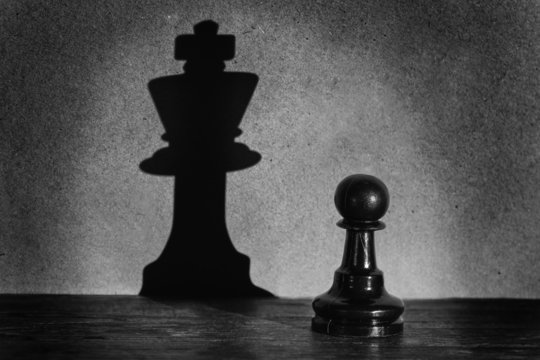
Let’s explore what makes pawns so special and how their quiet influence shapes strategy from the opening to the endgame.
🛡️ The True Role of Pawns
Pawns don’t move fast, and they don’t cover much ground, but they’re everywhere—eight per player. That sheer number gives them an incredible capacity for space control and positional influence. While a bishop can glide across the board and a queen can dominate diagonals and files, a pawn controls just one or two squares—but with hundreds of possibilities when working together.
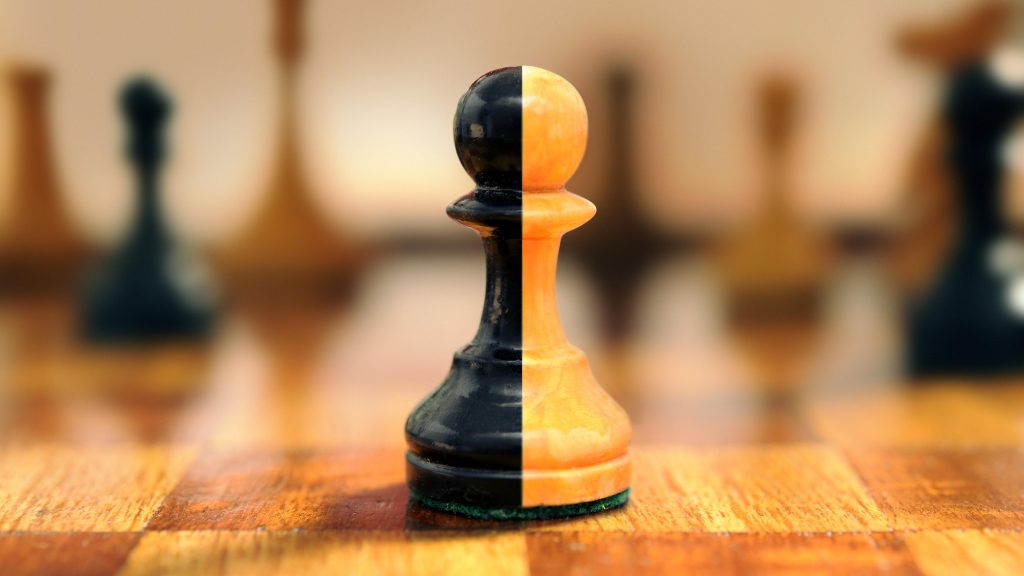
Their main function? Control and restriction.
- They act as shields, defending key areas of the board.
- They limit enemy piece mobility, boxing in even the most powerful units.
- And when advanced properly, they can become queens, dramatically shifting the balance of power.
🔄 The Path to Promotion
Promotion is a pawn’s secret superpower. March it all the way to the other side of the board, and it transforms—typically into a queen, the most powerful piece in the game.

But promotion is no easy journey. In the middlegame, the board is often congested with defenders and attackers, making pawn advancement a tricky challenge. That’s why endgames are where pawns truly shine—fewer pieces mean clearer paths to the finish line.
As Grandmaster Capablanca said,
“A passed pawn increases in strength as the number of pieces on the board diminishes.”
🧠 Middlegame Mastery: Using Pawns to Squeeze Opponents
One of the core strategic ideas in chess is restricting your opponent’s pieces, and pawns are the best tools for that.

Take the opening principle: “Control the center with pawns.”
Why the center? Because that’s where knights want to jump, bishops want to slice, and queens want to dominate. If your pawns occupy or control those central squares, you stop enemy pieces from reaching their optimal positions. It’s not the pawns that are powerful in isolation—it’s what they deny your opponent.
Let’s explore how that works through famous positions.
📘 Classic Opening Structures Where Pawns Shine
♟️ Italian Game – Giuoco Piano
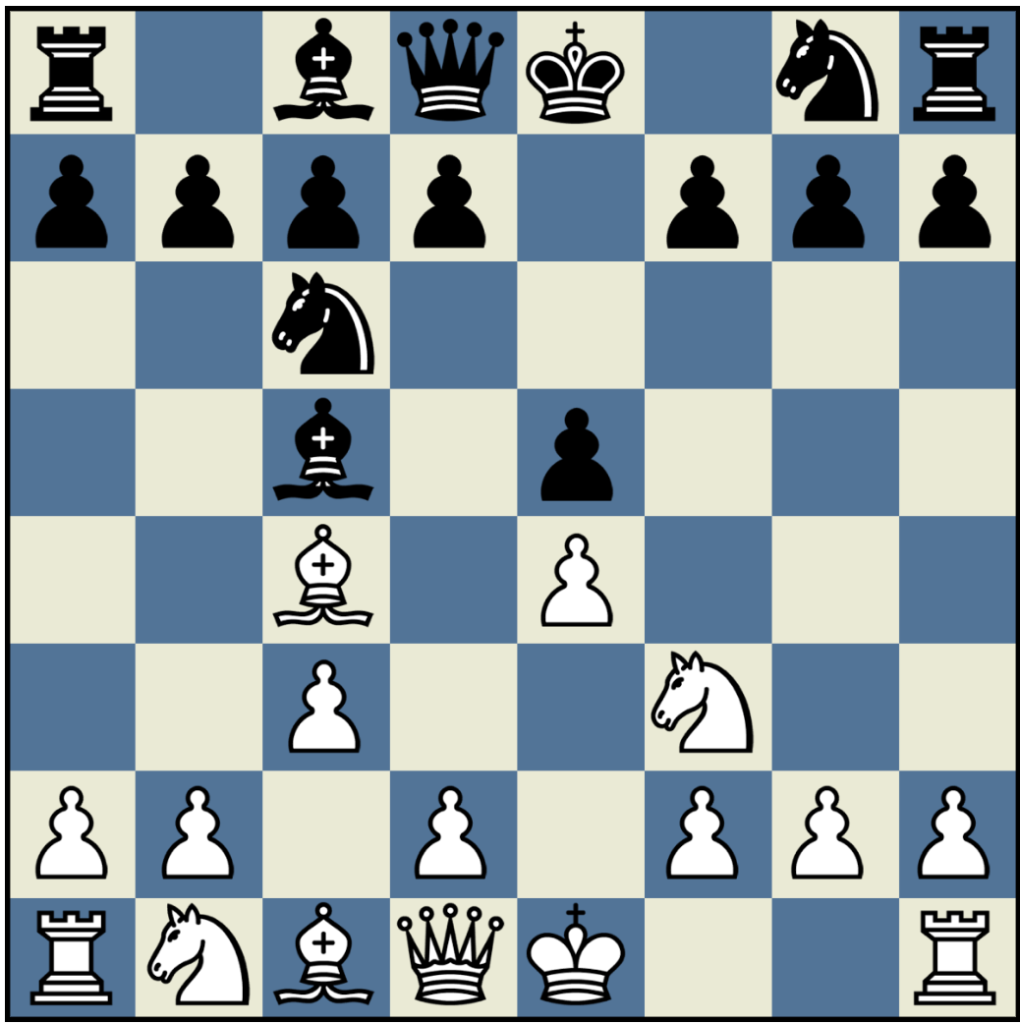
White’s pawn seem innocent, but it paralyzes Black’s knight. This positional grip means the knight struggles to influence the center or reposition effectively, turning it into a passive piece.
♟️ Najdorf Sicilian
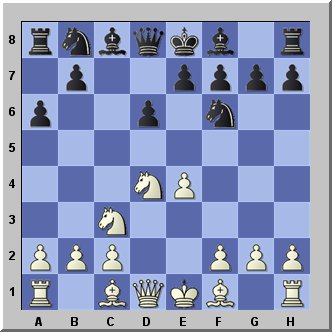
Here, Black’s pawns cramp White’s knight, pushing it far from critical central squares. Even with equal material, Black’s pieces breathe more freely—and that matters more than you’d think.
♟️ Berlin Defence

In the mainline Berlin, White’s pawn blocks their own light-square bishop and gives Black’s unopposed dark-square bishop full range. Even though Black’s king can’t castle and the pawn structure looks broken, control over squares gives Black strategic compensation.
🔍 Pawn Power in Practice – Real Game Moments

🕹️ Game 1: Piccoli vs. Sousa – Roquetas Open 2025
Even with symmetrical structure and developed pieces, White’s knights were heavily restricted by Black’s pawn storm. Moves like …h5 and …g4 kept squeezing space until White ran out of room. Black was clearly better—but even better games can be spoiled!
🕹️ Game 2: Unuk vs. Sousa – Spanish Team Championship 2024
Black sacrificed a pawn, but gained massive control over the board. White’s pawns did nothing to restrict Black’s movement, and after 16…Bh6!, all Black’s pieces began flowing effortlessly on dark squares. Black was completely winning—but in chess, victory still has to be converted.
🕹️ Game 3: Silva vs. Sousa – Famalicao Open 2024
Symmetry again—yet Black dominated. White’s knight was locked behind pawns with no entry points, while Black took over the board with expanding space. A clean, comfortable win showing how control trumps equality on paper.
🧩 Final Thoughts: The Soul That Shapes the Game
Pawns might be the least flashy pieces on the board, but they are the backbone of every plan. They define the structure, set the tone, restrict or liberate, and can eventually transform into queens. More importantly, they influence how your opponent plays.

To play pawns well is to play chess well.
Next time you look at a pawn, don’t just see a tiny soldier. See a guardian, a gatekeeper, a future queen—and the invisible hand controlling the flow of the game.
♟️ Ready to Level Up Your Game?
𝐉𝐨𝐢𝐧 𝐌𝐚𝐝𝐫𝐚𝐬 𝐒𝐜𝐡𝐨𝐨𝐥 𝐨𝐟 𝐂𝐡𝐞𝐬𝐬 𝐭𝐨 𝐝𝐞𝐟𝐞𝐚𝐭 𝐲𝐨𝐮𝐫 𝐨𝐩𝐩𝐨𝐧𝐞𝐧𝐭 𝐰𝐢𝐭𝐡 𝐛𝐫𝐢𝐥𝐥𝐢𝐚𝐧𝐜𝐞 𝐚𝐧𝐝 𝐩𝐫𝐞𝐜𝐢𝐬𝐢𝐨𝐧!
📍 Locations: T.Nagar | Anna Nagar | Mandaveli | Online
📞 Call: +91 98404 03376
🌐 Visit: www.madrasschoolofchess.com
📲 Follow us: @madrasschoolofchess
© The Madras School of Chess
Created by Webdzo